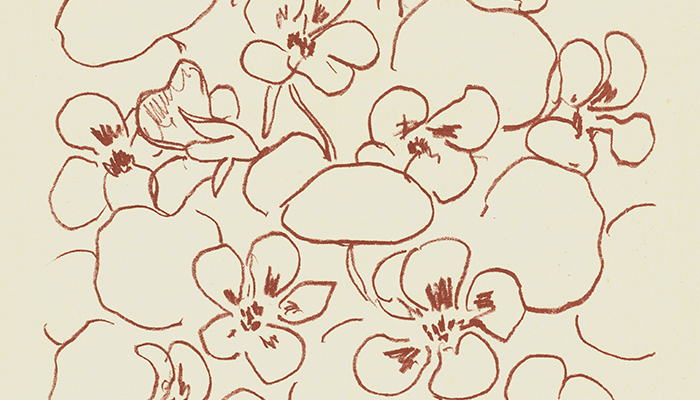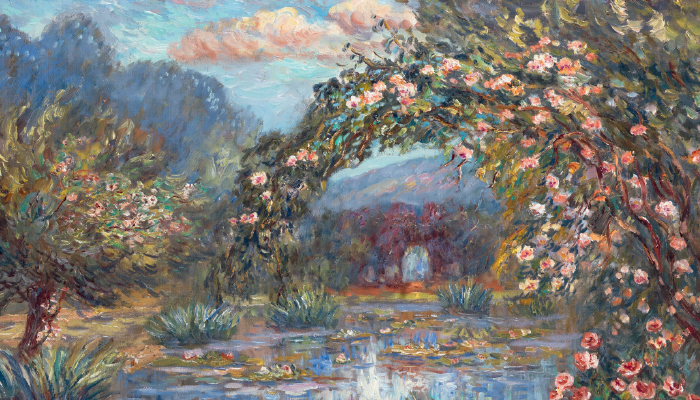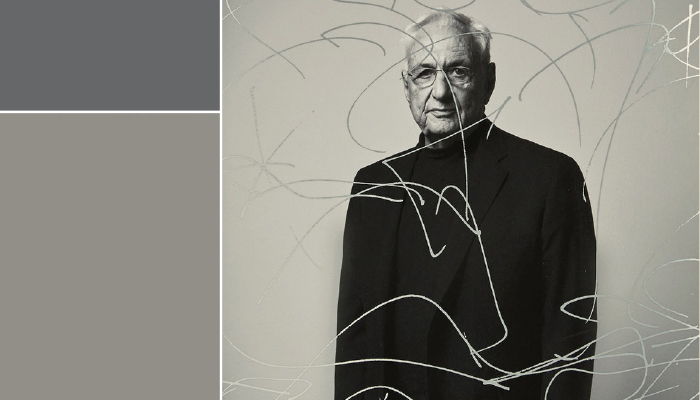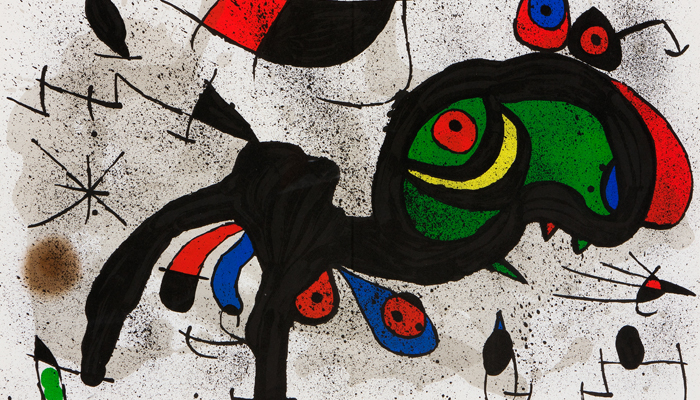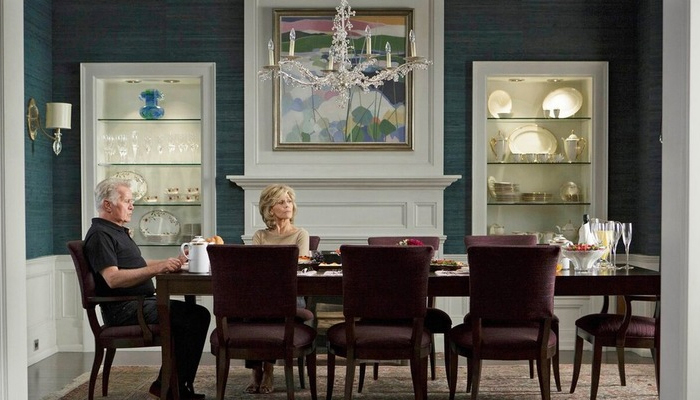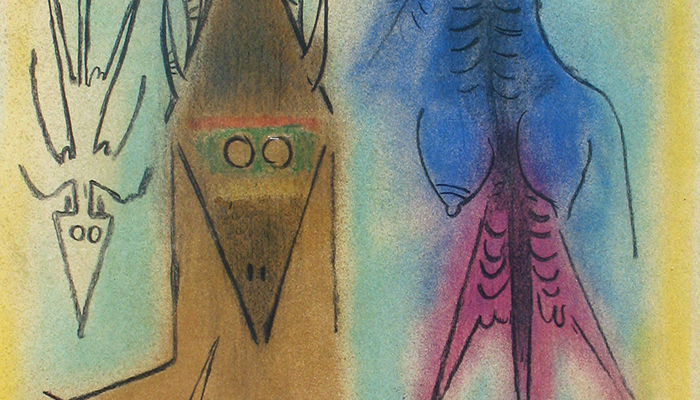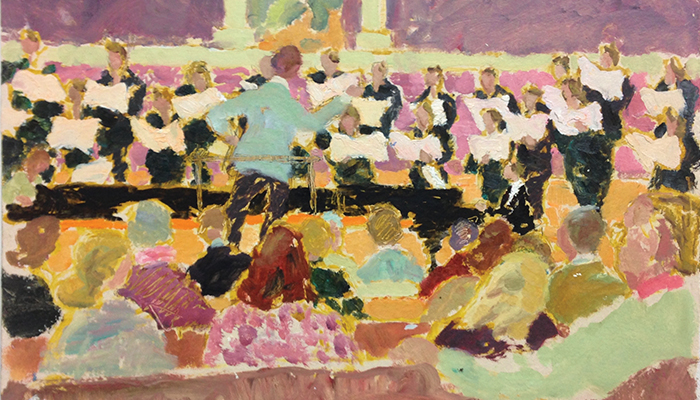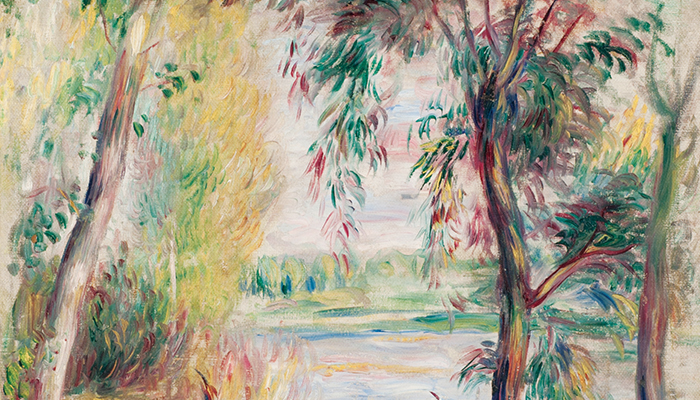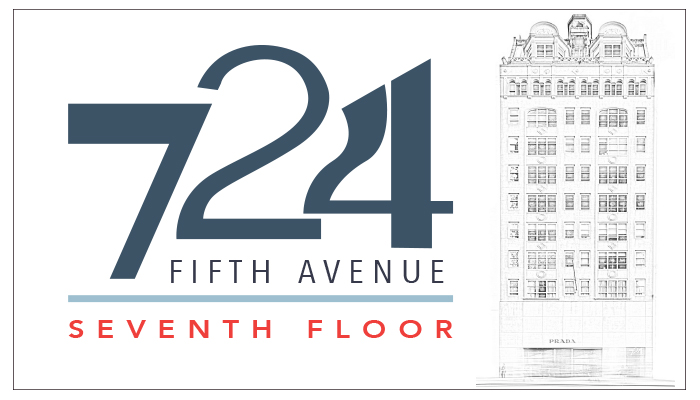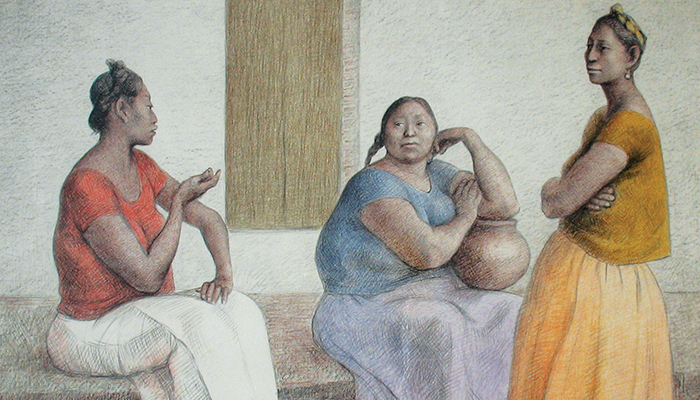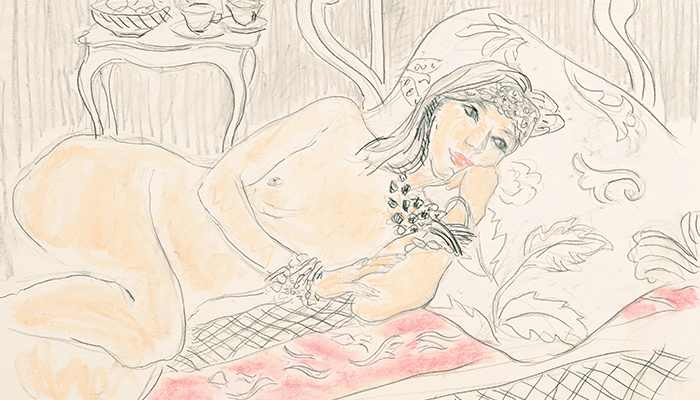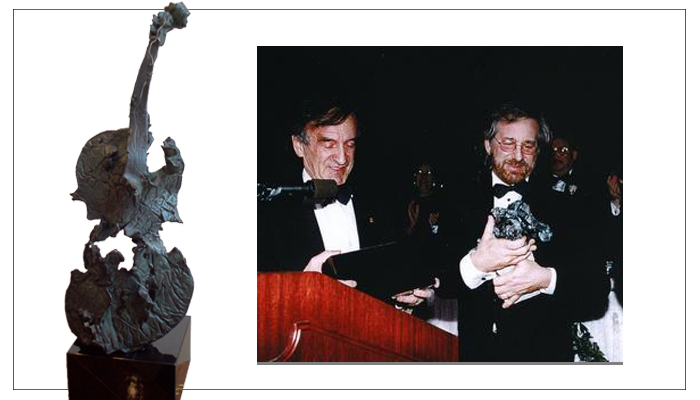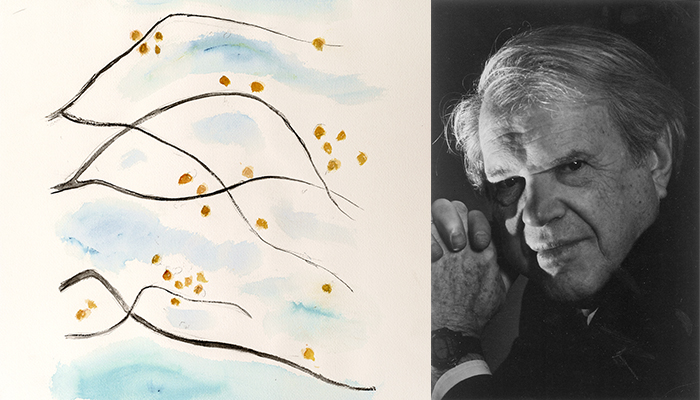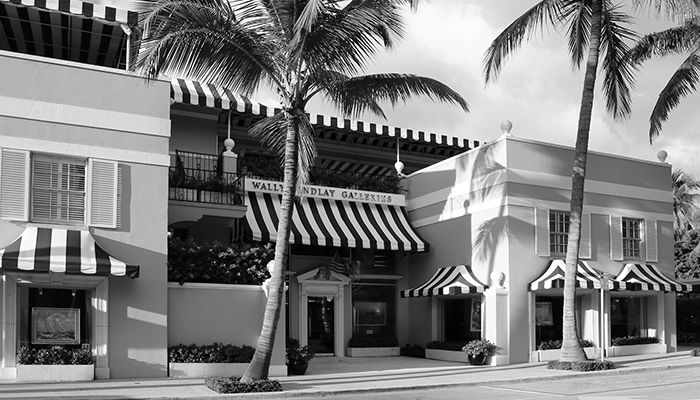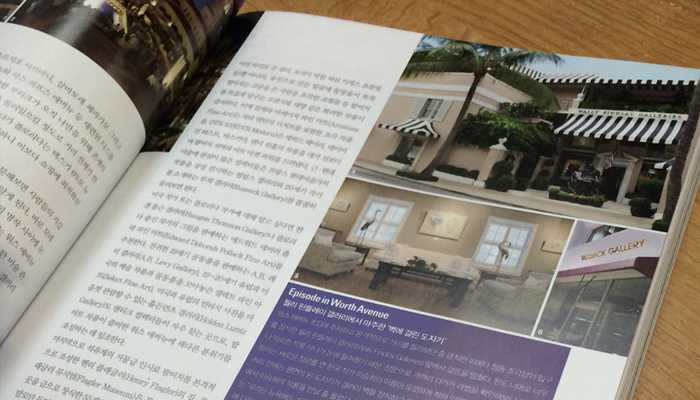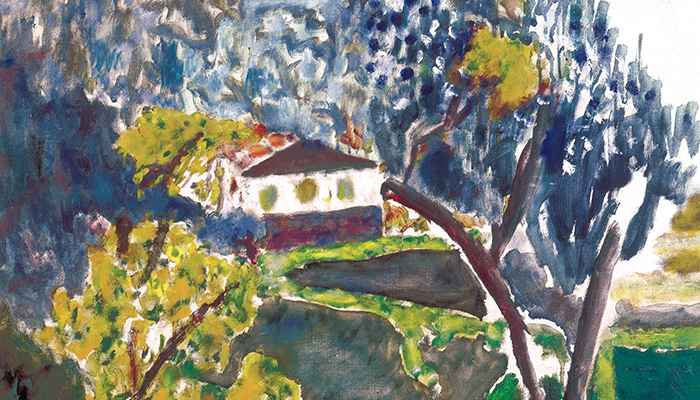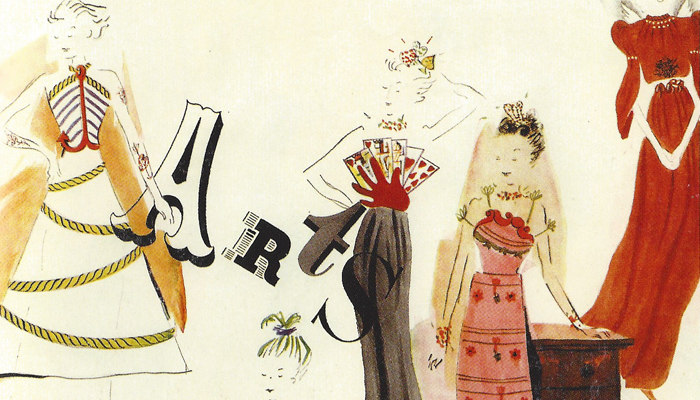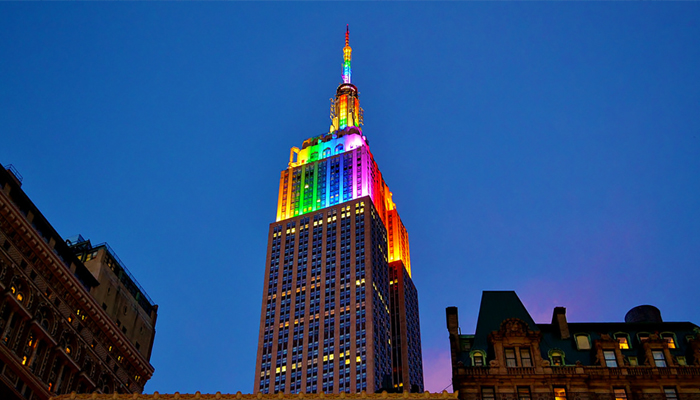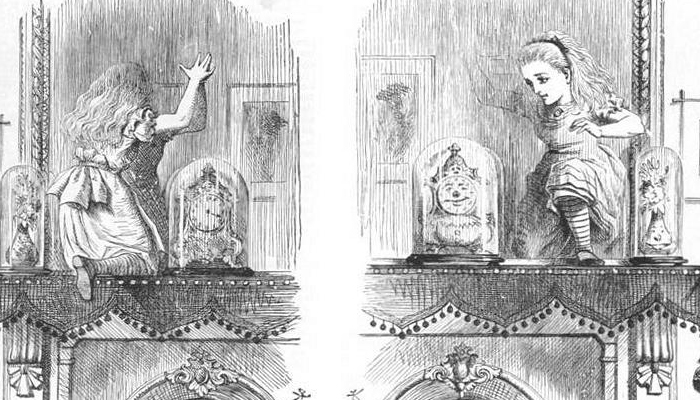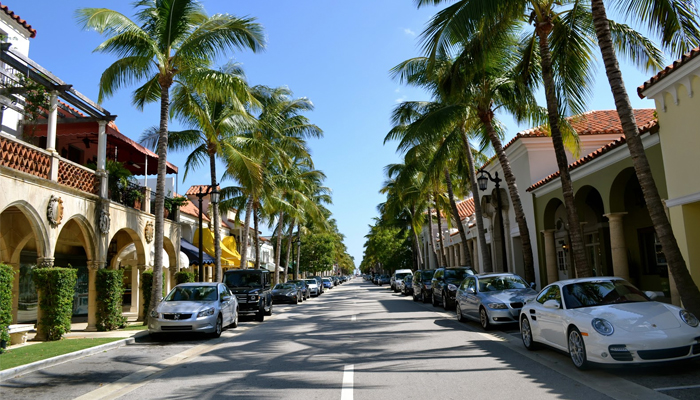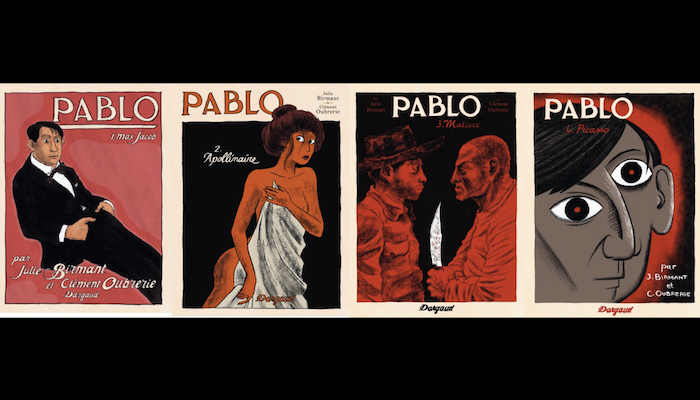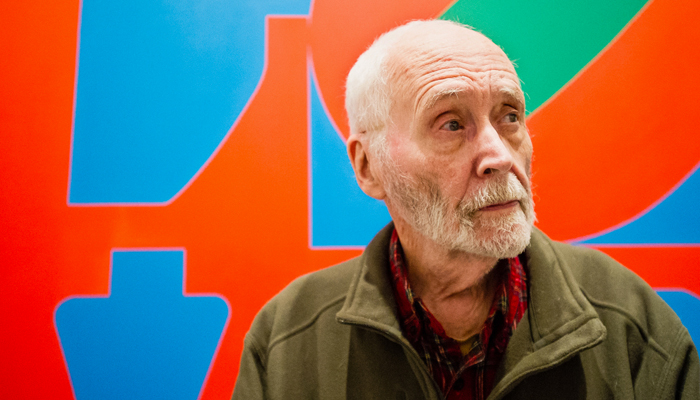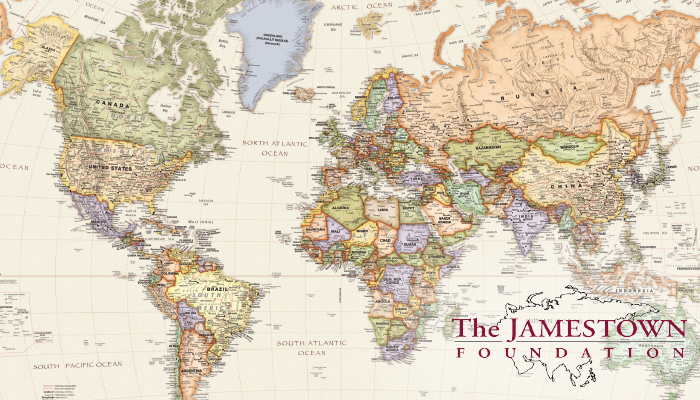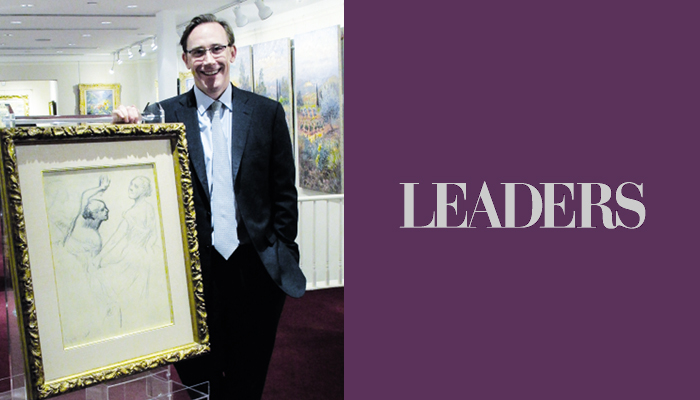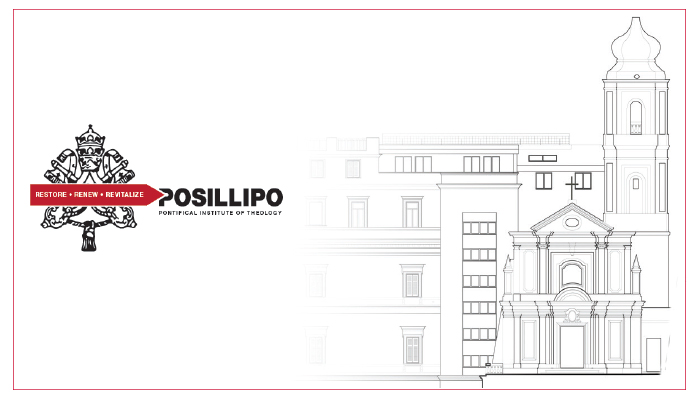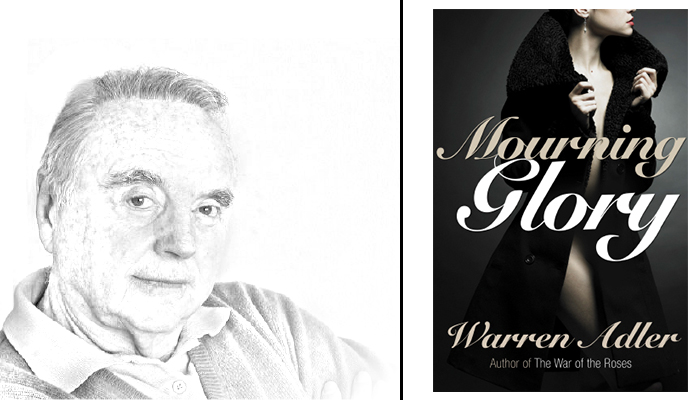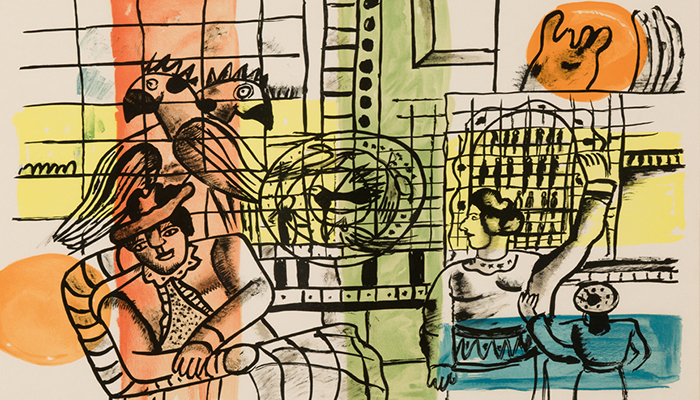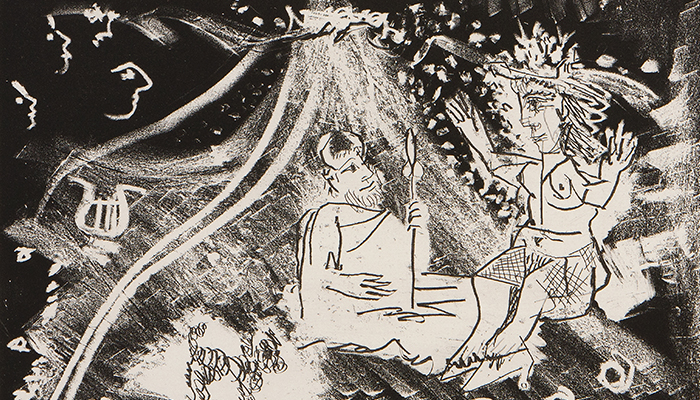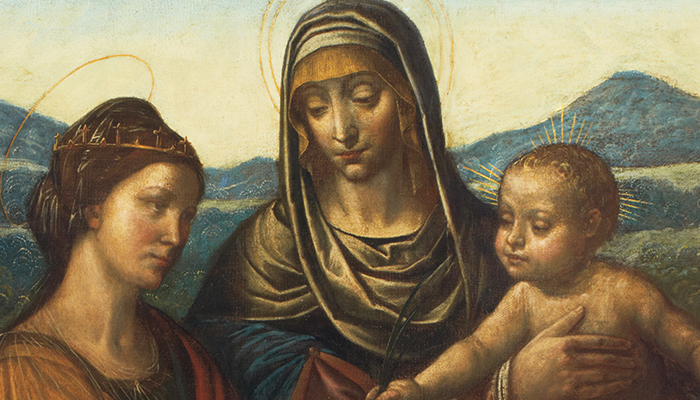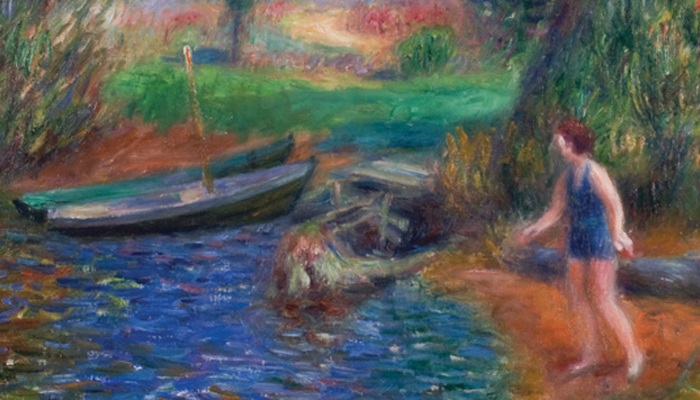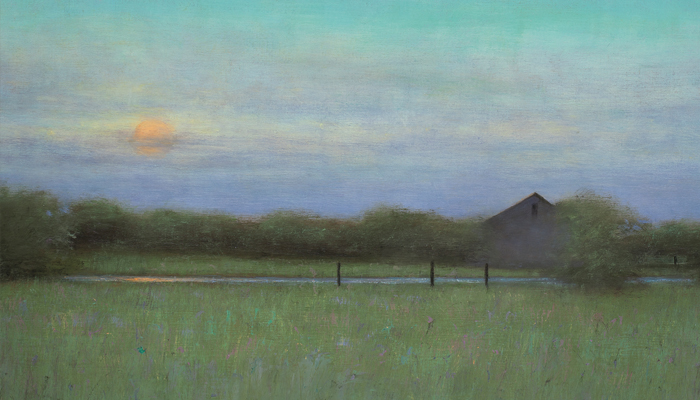March, 2016 | Art of Design
MOMA recreates Degas’ Dancers »
Photographs capture American Ballet Theater principal dancer Misty Copeland
The Museum of Modern Art will be opening “Edgar Degas: A Strange New Beauty” on March 26, a unique collection of 120 rarely seen monotypes along with 50 related paintings, drawings, pastels, sketchbooks and prints, showing Degas at his most modern. In celebration of the exhibition opening, Harper’s Bazaar teamed with American Ballet Theater principal ballerina Misty Copeland to recreate some of Degas most recognized and celebrated works. American Ballet Theater has always had a personal relationship with The Findlay Galleries as James R. Borynack, owner and CEO, was a development chairman for the Board of Directors. Lucia Chase, Founder and Co-Director, was a great aunt to Stephanie Borynack Clark.
Captured by photographers Ken Browar and Deborah Ory, Copeland captures the grace and essence of Degas’ paintings and sculpture, while dressed in high fashion designs by Valentino, Alexander McQueen, Carolina Herrera and Oscar de la Renta. Copeland has made history in her career, most notably for being named as the first African American female principal dancer with the prestigious American Ballet Theater, and for her reputation of redefining what a ballerina should look like.
In regards to recreating Degas’ work, Copeland told Harper’s Bazaar that “It was interesting to be on a shoot and to not have the freedom to just create like I normally do with my body, trying to re-create what Degas did was really difficult. It was amazing just to notice all of the small details but also how he still allows you to feel like there’s movement.”
Degas’ ballet works are known for their modern sensibility, depicting the dancers practicing, training, and hanging around studios, capturing them at work and the beauty in the dancer’s struggle, rather than in the idealized perfection of the performance. In this respect, Copeland serves as a perfect representative for Degas’ dancer, as she represents a unique and modern take on the ballerina.
Wally Findlay Galleries proudly exhibits a collection of works by Degas, featuring drawings and sculptures of his iconic ballerinas.
Featured Image: Edgar Degas: Étude de Danseuses (Trois Danseuses) – from Wally Findlay Galleries Collection (132299)
March, 2016 | Art Hotspot
Painting the Modern Garden: Monet to Matisse »
Exhibition explores the role gardens played in art history
The Royal Academy of Arts in London and The Cleveland Museum are exhibiting “Painting the Modern Garden: Monet to Matisse,” a collection examining the role gardens have played in art from the 1860s to the 1920s. The exhibition, with over 120 works, includes artists such as Claude Monet, Pierre-Auguste Renoir, Paul Cézanne, Camille Pissarro, Vincent Van Gogh, Raoul Dufy, Pierre Bonnard and Henri Matisse.
Monet, arguably the most important painter of gardens, was also an avid horticulturist who cultivated gardens wherever he lived. The exhibition uses Monet’s works as the backbone of the exhibition, and explores the garden theme in modern art, including Impressionist works, Post-Impressionists and avant-garde artists. The collections highlights the evolution of the garden theme in context of artistic movements and social and political events.
Wally Findlay Galleries has a vast collection of garden paintings, including works by the artist’s represented in this exhibition, and building upon the collection with important contemporaries, such as Isabelle de Ganay, Maître de l’École de Rouen.
Featured Image: Henri Matisse: Florilege des Amours de Ronsard – from Wally Findlay Galleries Collection (136688)
March, 2016 | Art for a Cause
Wally Findlay Galleries honorsThe American Friends of Blérancourt »
Celebrating AFB’s 30th Anniversary | March 7, 2016
On March 7, Wally Findlay Galleries is proud to host a cocktail reception, dinner and private preview exhibition in honor The American Friends of Blérancourt and Anne Morgan and Heroic Women of World War I. The evening will include a benefit exhibition of recent paintings by contemporary artist Isabelle de Ganay, Maître de l’École de Rouen, and a collection of historic photographs from Anne Morgan’s War: Rebuilding Devastated France, 1917–1924 provided by the Blérancourt museum.
Isabelle de Ganay was born in Rouen in 1960. Art and nature very quickly occupied a predominant place in the life of young Isabelle and when she was only 15 years old, she was accepted to the famous Beaux-Arts in Rouen. This was an honor rarely bestowed on someone so young and serves as an early indication of her talent. In 1976, Isabelle met Albert Malet, the last Impressionist painter of the School of Rouen. Malet had been a student of Robert Antoine Pinchon and he would become Isabelle’s mentor for the next ten years. Isabelle continued her formal education at the Academie Julian and L’École des Beaux-Arts in Paris, where she was first in her class. Isabelle returned to Rouen, and began exhibiting throughout France. Critics praised her unique style and more exhibitions followed for the artist. Malet, who had always been aware of her gift as an artist, designated Isabelle as his successor. Upon his death in 1986, Isabelle assumed his position as Maître de l’École de Rouen. Thus carrying the responsibility of passing on the knowledge and technique of one of the last French schools of art.
In 1917 Anne Morgan, youngest daughter of J. Pierpont Morgan, returned to France, determined to bring aid to the war-torn civilian population. She managed to be sent as close as possible to the battlefront in Picardy, to Blérancourt, a little village dominated by the ruins of a chateau built by one of France’s most prestigious 17th century architects, the Huguenot Salomon de Brosse. Only two gate houses and the fraction of a wing plus two monumental arches remained of the original structure, but Miss Morgan set to work and made it her base for an extraordinary campaign of humanitarian aid.
She was joined by a committee of volunteer women from both France and the U.S. and she worked closely with the American Field Service, of which Blérancourt was one of its key centers. After the war she and her volunteer workers rebuilt entire villages and brought doctors, nurses, teachers and agricultural experts from the U.S. to bring life to the devastated region. At the same time she bought the chateau and decided to turn Blérancourt into a museum of French-American history. The collections represent five centuries of Franco-American relations. The success of Anne Morgan’s efforts has made her a legend in Picardy. In 1931 she gave the chateau and its collections to the French government.
In 1985 the American Friends of Blérancourt Inc. was founded by Baroness Bernard d’Anglejan Chatillon, who has been working tirelessly with President Mrs. Jean-Paul Anglès to raise funds for the museum’s expansion. In 1989 the AFB completed a first addition, the creation of the Florence Gould Pavilion. The museum is currently closed for construction work on a large new extension, designed to double the exhibition space. The American Friends are also responsible for the creation of several gardens and an arboretum of American trees on the museum grounds. These remain open to the public as are the two newly-restored gatehouses, the Anne Morgan Pavilion in which Anne Morgan lived and the Bibliothèque Pavilion which houses the library.
Wally Findlay Galleries’ interest in Blérancourt is truly personal as Frederick S. Clark, Vice President and Director of Wally Findlay Galleries New York, is a decedent of J. Pierpont Morgan.
Featured Image: Isabelle de Ganay: Jardin en Normandie – from Wally Findlay Galleries Collection (137007)
March, 2016 | Artful Read
Wally Findlay Galleries hosts author Paul Goldberger for Salon Talk »
Goldberger discusses his critical biography “Building Art: The Life and Work of Frank Gehry”
Building Art: The Life and Work of Frank Gehry by Paul Goldberger, Pulitzer Prize winning architectural critic and educator and Joseph Urban Chair in Design and Architecture at Parsons, is an engaging, nuanced exploration of the life and work of Frank Gehry, undoubtedly the most famous architect of our time. This first full-fledged critical biography presents and evaluates the work of a man who has almost single-handedly transformed contemporary architecture in his innovative use of materials, design, and form, and who is among the very few architects in history to be both respected by critics as a creative, cutting-edge force and embraced by the general public as a popular figure.
Paul Goldberger is a Joseph Urban Chair in Design and Architecture at Parsons School of Design. From 1997 through 2011, he served as the architecture critic for The New Yorker, where he wrote the magazine’s celebrated Sky Line column. He began his career at The New York Times, where, in 1984, he earned the Pulitzer Prize for Distinguished Criticism. He is formerly dean of the Parsons.
On Tuesday, March 1st, Wally Findlay Galleries with Alumni Relations, The New School/Parsons proudly hosted a cocktail reception and salon talk featuring the author Paul Goldberger, as a guest speaker, along with Joel Towers, Executive Dean, Parsons.
James R. Borynack, Chairmen and CEO of Wally Findlay Galleries is an alumni and dedicated partner of Parsons School of Design and was a co-founder with Marvin Traub, CEO of Federated Department Stores, of the prestigious Parsons Table Award and Program.
February, 2016 | Art of Design
Joan Miró’s Studio Recreated »
Visitors can explore the studio, complete with paintings and replicas of Miro’s objects
Mayoral, a Barcelona art gallery, is recreating Joan Miró’s Majorca studio in London. The space will feature replicas of the eclectic objects scattered around Miro’s original studio, along with 25 works by the artist. The studio is being recreated via photographs from the 1970s by Jean-Marie del Moral and the memories of the artist’s grandson, Joan Punyet Miró.
In the late 1930’s Miró had not yet established a permanent studio, rather he moved from one small, insufficient studio to the next. Nearly two decades later he finally created a permanent studio, which became central to his evolution as an artist. The artist would paint in this studio until two years before his death. In a recent interview for the New York Times, the artist’s grandson describes the studio as “a very chaotic place where every single thing had to be in the right place.”
Architect Josep Lluis Sert, a friend of Miró’s, designed the original studio while exiled to the United States after having fled Spain after the Spanish Civil War. The artist and the architect designed the space via correspondences, many of which will be included in the exhibition. The completion of the studio marked a new artistic chapter for the artist, he even burned about 80 percent of the older works that he had shipped from Barcelona. Today, the original studio is part of the Miró Foundation, which includes a museum and another studio the artist added in 1959.
Wally Findlay Galleries is proud to host a large collection of Miró’s works currently on view at the Palm Beach Gallery.
Featured Image: Joan Miró: Untitled (Vert), 1971 – from Wally Findlay Galleries Collection (133309)
February, 2016 | Art Hotspot
The Town of Palm celebrated its new Town Square »
Newly restored Memorial Fountain and renovated and expanded Memorial Park
The Town of Palm Beach proudly celebrated its Town Square over the weekend of January 30th and 31st, revealing the restored 1929 Memorial Fountain and the newly renovated and expanded Memorial Park. The festivities included a private festive unveiling of the restored Mizner fountain followed by an major donor reception and an exclusive dinner on the Terrace at Wally Findlay Galleries that Saturday evening. On Sunday residents of Palm Beach, enjoyed a formal dedication ceremony at the newly renovated Town Square complete with an exhibit of vintage cars, musical performances, lectures and more.
The project, designed by architect Mark Marsh and landscape designer Jorge Sanchez, unifies Town Hall Square. Memorial Park has been expanded with sidewalk extensions, additional canopy trees around the fountain, and new plants and hedges. Many residents of Palm Beach, along with corporate sponsors contributed to the Memorial Fountain project, raising the funds necessary to complete this historic beautification project. Memorial Fountain was originally designed by Addison Mizner in 1929, inspired by Fountain of the Sea Horses — an 18th-century piece at Villa Borghese in Rome. Some of the same sponsors who had originally contributed to the Memorial Fountain project in 1929, were once again lead sponsors for this recent two year restoration project.
Wally Findlay Galleries is a proud lead sponsor of this project. In addition to hosting the private reception and dinner for over 125 major donors, the gallery commissioned a painting of the fountain by British Contemporary Impressionist Charles Neal to be donated to support the Town Square Celebration. Charles Neal has been represented by Wally Findlay Galleries for over ten years.
Featured Image: Charles Neal: The Terrace, Mizner Fountain – from Wally Findlay Galleries Collection (137093)
February, 2016 | Art for a Cause
Wally Findlay Galleries honors Bascom Palmer »
Celebrating the 35th Annual Evening of Vision Gala | February 1, 2016
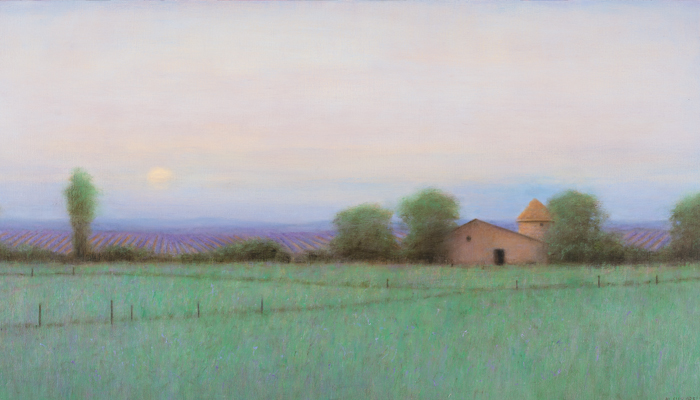 Friends and supporters of Bascom Palmer Eye Institute attended a cocktail reception in celebration of the 35th Annual Evening of Vision Gala on Monday, February 1, at Wally Findlay Galleries on Worth Avenue. After the reception, Mr. Borynack and Mr. Zaralegui hosted a private dinner for 25 major donors of Bascom Palmer at Club Colette in honor of Dale and Marietta McNulty, gala chairmen, Alfonso and Raysa Fanjul, honorary chairmen, and Eduardo C. Alfonso, M.D., Chairman of Bascom Palmer Eye Institute. The reception was a complement to the exhibition of recent works by the renown American contemporary painter Mary Sipp Green. Sipp Green’s collection was the result of two years of her devoted visits to France with a personal focus on Paris and the charm of Provence. The exhibition was handsomely received by both Wally Findlay Galleries collectors and the supporters of the Bascom Palmer Gala committee.
Friends and supporters of Bascom Palmer Eye Institute attended a cocktail reception in celebration of the 35th Annual Evening of Vision Gala on Monday, February 1, at Wally Findlay Galleries on Worth Avenue. After the reception, Mr. Borynack and Mr. Zaralegui hosted a private dinner for 25 major donors of Bascom Palmer at Club Colette in honor of Dale and Marietta McNulty, gala chairmen, Alfonso and Raysa Fanjul, honorary chairmen, and Eduardo C. Alfonso, M.D., Chairman of Bascom Palmer Eye Institute. The reception was a complement to the exhibition of recent works by the renown American contemporary painter Mary Sipp Green. Sipp Green’s collection was the result of two years of her devoted visits to France with a personal focus on Paris and the charm of Provence. The exhibition was handsomely received by both Wally Findlay Galleries collectors and the supporters of the Bascom Palmer Gala committee.
Bascom Palmer Eye Institute is a non-profit eye institute whose mission is to lessen the burden of blinding diseases by offering compassionate clinical care to patients, conducting forward-thinking research and training the ophthalmologists of the future. For the twelfth consecutive year, Bascom Palmer Eye Institute is ranked the nation’s best eye hospital in the country by U.S. News & World Report.
In addition to its international reputation as one of the premier providers of eye care in the world, Bascom Palmer is the largest ophthalmic care, research and educational facility in the southeastern United States. More than 250,000 patients are treated each year with nearly every ophthalmic condition, and more than 18,000 surgeries are performed annually. With four patient care facilities in Florida (Miami, Palm Beach Gardens, Naples and Plantation), the Institute serves as the Department of Ophthalmology for the University of Miami Miller School of Medicine. Wally Findlay Galleries is a proud partner in support of the continuing outstanding accomplishements that the Bascom Palmer specialist and staff achieves on a daily basis.
February, 2016 | Artful Read
Wally Findlay Galleries supports Blenheim Palace with benefit exhibition »
“Blenheim and the Churchill Family” gives an insider look into the private lives of the English Aristocratic family
“Blenheim and the Churchill Family,” written by Lady Henrietta Spencer-Churchill, founder of the Blenheim Foundation and daughter of the eleventh Duke of Marlborough, is the first book ever written by a family member of England’s well-known dynasty. The book gives a unique perspective into the private lives of an English Aristocratic family, with an extensive history of the great house. Showcasing the private photographs, paintings and family papers and letters, it gives a glimpse into Lady Spencer-Churchill’s ancestors’ personal lives from 1700 to today, and explores the rich history of the Palace as is one of Europe’s most important pieces of Baroque architecture and a World Heritage site.
In mid February Wally Findlay Galleries will be exhibiting a commissioned collection of paintings by British Contemporary Charles Neal of Blenheim Palace. The Palace was the gift of Queen Anne and a grateful nation to the 1st Duke of Marlborough for his great victory at the Battle of Blenheim in 1704. The exhibition followed by a private fundraising dinner will benefit The Blenheim Foundation as they work to restore the Palace for future generations.
January, 2016 | Art of Design
Artwork Plays Essential Role in TV and Film Sets »
WFG Artist Tadashi Asoma painting seen on the set of Grace and Frankie
Oftentimes artworks are essential to set design for TV shows and movies. There is a wide variety of ways in which these works can be obtained, ranging from rentals of originals, to duplicates of famous works, and even artists who create works solely for Hollywood. If you watch carefully you can often see works by Wally Findlay artist’s appearing in popular shows and movies.
Contemporary Asian Master Tadashi Asoma’s work “Water Lilies” has actually made two appearances in TV shows. It can be seen in the Netflix original Grace and Frankie hanging in the dining room, and in ABC’s Cougartown hanging above the living room couch. Asoma’s works are defined by luminous palettes with sudden bursts of brilliant color. These splendid differences of touch and tone exemplify his natural originality and closeness with nature.
An ode to Edgar Degas, the French painter known for his famous paintings of dancers, can be seen hanging in the grand foyer of Grayson Manor on ABC’s Revenge. Although the work is not an original, it is clearly an ode to Degas’ “Blue Dancers.” Degas’ work also makes an appearance in Titanic, alongside works by Pablo Picasso and Claude Monet. The works all appear as part of Rose’s extensive art collection which she brought aboard the ship.
Other notable works by Wally Findlay artist’s included on the big screen include a Marc Chagall painting in Notting Hill, Pierre-August Renoir portrait in Footloose, Fernand Leger in Entrapment, and Henri Matisse cutouts on The Simpsons – to name just a few.
January, 2016 | Art Hotspot
Centre Pompidou hosts retrospective of Wilfredo Lam »
On View through February 2016
Centre Pompidou in Paris will be exhibiting a retrospective of Cuban artist Wilfredo Lam, with over 400 paintings, drawings, prints and documents. Catherine David, the deputy director of the Centre Pompidou and organizer of the exhibition, wants the exhibition to take Lam out of the pigeonhole of “Surrealist” or “follower of Picasso” and to highlight the complexity of his work and his relationship to the world. The exhibition strives to highlight Lam’s work not based on his connections to the European avant-gardes, but as a great Modern who came from different influences.
The chronological sweep of the exhibition follows Lam’s life from his Chinese father and Afro-Cuban mother, during his studies in Spain, and to the Spanish Civil War and his fight for the Republican side. The collection includes canvases from early works which he left in Paris in 1938 with a letter of introduction to Picasso; his period in Paris and Marseilles of illustrations for André Breton’s poem Fata Morgana; and his lesser-known area of printmaking, Lam’s core medium from the 1960s onward.
Wally Findlay Galleries holds an extensive collection of Lam’s lithographs, available on view in Palm Beach and New York.
Featured Image: Wilfredo Lam: Demons Familieres (Pleni Luna Portfolio), 142/262, 1974 – from Wally Findlay Galleries Collection (132317)
January, 2016 | Artful for a Cause
Wally Findlay Galleries honors the Palm Beach Symphony »
Celebrating the 2016 Annual Gala – Midnight Reveries: A Night in España | January 4, 2016
Wally Findlay Galleries hosted Palm Beach Symphony’s Gala Kickoff reception featuring an exclusive evening of art and cocktails on January 4, 2016. The event included a special appearance by renowned British painter Hugo Grenville in this private preview exhibition of his recent works entitled The Colour of Light. More than 175 members and friends of the gallery attended the social event and mixed and mingled with the artist while enjoying his lyrical and dreamlike romantic paintings.
Palm Beach Symphony is a non-profit arts organization dedicated to engaging, educating, and entertaining the greater community of the Palm Beaches through live performances of inspiring orchestral music. The Symphony has grown and expanded from its early, small beginnings in 1974. It has worked and succeeded in becoming a key cultural force in the area through high quality concerts and fine dining experiences, social and community events, and educational outreach programs.
January, 2016 | Artful Read
Sue Roe writes about the “Private Lives of the Impressionists” »
An intimate look into private lives of the creative geniuses
“The Private Lives of the Impressionists” by Sue Roe gives a unique perspective into the lives of Manet, Monet, Pissarro, Cézanne, Renoir, Degas, Sisley, Morisot and Cassatt. The researched biography follows the Impressionists through their everyday lives, revealing light on the society of genius colleagues who transformed the art world forever.
Roe meticulously researched the lives of the artists, to tell the narrative of how they lived and worked together, and argues that their mutual drive for success was a strong unifying factor among the diverse group. Publishers Weekly states, “Roe’s nuanced portraits of these artists include personal details both small… and significant.. The result is a comprehensive and revealing group portrait, superbly contextualized within the period’s volatile political, socioeconomic and artistic shifts.” This group portrait of these great artists appeals to both art and social historians as well as to the general reader, touching on themes such as artistic bliss, profound friendships and transcendent love, and bringing to life the war, tragedy and familiar conflicts that these artists also endured.
Wally Findlay Galleries is considered one of the foremost authorities on the French Impressionists and Post-Impressionists and has an esteemed gallery collection of Impressionist related works. The galleries’ current collection includes works by Pierre Bonnard, Edgar Degas, Jean-Baptise Armand Guillaumin, Henri le Sidaner, Gustave Loiseau, Henri Jean Guillaume Martin, Pierre-Auguste Renoir, Louis Valtat, and the American Impressionists Theodore Earl Butler and Childe Hassam.
Featured Image: Pierre-Auguste Renoir: Arbres au bord de l’Eau – from Wally Findlay Galleries Collection (134373)
December, 2015 | Art of Design
Huffington Post Explores the History of Blue Pigment »
History on the development of blue ink and how it forever changed the art world
Oftentimes the dazzling range of colors in a painting are taken for granted as modern artists have a seemingly endless supply of colors; from rich dark hues to bright acidic colors, the possibilities are infinite. Huffington Post’s article “The Accidental Color that Changed the Course of Art” gives a beautiful history of the development of blue pigment.
During the Renaissance blue pigments had to be used sparingly, reserved for the richest patrons by the most prosperous artists. It wasn’t until Sir Isaac Newton studied the laws of light and color and German chemist Heinrich Diesbach discovered a vivid new blue pigment that the color became available to all artists. Diesbach was attempting to make a batch of Florentine lake, a red pigment, when he accidentally contaminated the batch with the presence of iron-cyanide and produced a deep blue color. This Prussian blue allowed painters to mix a wider spectrum of colors on their palette.
In 1704 Newton also released Opticks in which he discussed his findings about light and color. With this new found knowledge artists began experimenting with color harmonies to create illusions of depth, with color wheels and color theories revealing sophisticated relationships.
These discoveries forever changed the history of color and painting. Without them the works lining the walls of Wally Findlay Galleries, and all museums and galleries, would be drastically different.
Feature Image: Zvonimir Mihanovic: Near Shoreline, 2010 – From Wally Findlay Galleries Collection (134895)
December, 2015 | Art Hotspot
Wally Findlay Galleries moving to New Location on 724 Fifth Avenue »
New Location Opening February 2016
After 50 years on 57th Street, Wally Findlay Galleries is moving to 724 Fifth Ave on the seventh floor with new spacious galleries occupying over 6,000 square feet. Wally Findlay Galleries has a rich history showcasing celebrated artists who have shaped the world of art both in New York and around the world over the past 150 years.
724 Fifth Ave is a stately twelve story building located in the heart of Fifth Avenue’s premiere shopping district. The building is home to some of the city’s most prestigious galleries and businesses and neighbors with some of New York’s most renowned attractions and retailers such as the Museum of Modern Art, Tiffany, Trump Tower, Bergdorf Goodman, Harry Winston, amongst others.
Wally Findlay Galleries looks forward to continuing the tradition of promoting and providing quality works by great artistic talents by practicing the highest standards in our relationships with both the artist and the collector.
Please contact the New York gallery for appointments during move or for more information: (212) 421 5390.
December, 2015 | Art for a Cause
Wally Findlay Galleries hosts patrons and friends of the Daniel E. Ponton Fund for the Neuroscience »
Honoring the 2015 Benefit Dinner Dance Ladies Committee | November 26, 2015
Wally Findlay Galleries hosted patrons and friends of the Daniel E. Ponton Fund for the Neurosciences at Brigham and Women’s Hospital to honor the fund and the 2015 Benefit Dinner Dance Ladies Committee. The evening included a special preview exhibition of Connections: The Roots of Modernism with works by Spanish Modern Master Pablo Picasso and Contemporary Modernist Gilles Gorriti (b. 1939). The Gallery donated a $20,000 painting by Gorriti in support of this Palm Beach Benefit, as well as a portion of the proceeds from the exhibition benefitting the fund.
Created in 2007, The Daniel E. Ponton Fund is committed to propelling medical research and advancing patient care in both local and global communities. The fund has provided critical support for some of the nation’s most promising scientists at Brigham and Women’s Hospital who are paving the way to accelerate advances to cures for diseases including brain and spinal tumors, aneurysms, vascular malformations, spinal cord injury, and brain trauma. Now in its eighth year, the Ponton Fund has expanded to support global health efforts in Rwanda, Tanzania, and the Dominican Republic. To date, the fund has committed nearly $7M to support programs that provide hope and promise to patients and families around the globe.
December, 2015 | Artful Read
Art Newspaper Interviews Frank Stella »
A conversation with the American painter and printmaker
The Art Newspaper conducted an interview with American painter and printmaker Frank Stella in light of his retrospective opening at the Whitney Museum of American Art. The retrospective showcases the artist’s works from the mid-1950s to the present with over 100 works. The exhibition features Stella’s best-known works alongside rarely seen examples drawn from collections around the world. Accompanied by a scholarly publication, the exhibition fills the Whitney’s entire fifth floor, an 18,000-square-foot gallery that is the Museum’s largest space for temporary exhibitions.
The interview gives a relaxed view of Stella, describing him as a straight talker, with no anxieties, chatty and at ease about the show. His most favorite quote about his work “What you see is what you see” came from a 1964 interview with Bruce Glaser, but is still relevant to the artist’s attitude today.
The Art Newspaper’s interview covers everything from organizing an exhibition, how and why Stella convinced the curators to arrange the show achronologically, crises in his work, and musical and literary influences.
Wally Findlay Galleries is proud to host a collection of prints by Frank Stella which can be seen at the Palm Beach and New York galleries.
CLICK HERE TO READ THE ENTIRE INTERVIEW
Featured Image: Frank Stella: Sinjerli Variation, 1a, 1977 – From Wally Findlay Galleries Collection (134315)
November, 2015 | Art of Design
Luxe Magazine Features Palm Beach Home with Extensive Art Collection »
Works by Francisco Zúñiga and Alexander Calder on display
Luxe Magazine is the uncompromised source for those with a passion for creating beautiful surroundings and living well. It is the go-to guide and resource for design, decorating, architecture and renovation. The Palm Beach fall edition of the magazine featured a home in Wellington, FL decorated by LA based designer Vance Burke.
The home featured a stunning collection of art, including paintings, prints, screens, and sculptures – a varied collection ranging from works by Modern Masters to antiquities.
The focal point of the living room is a grand piano next to a work by Alexander Calder. The American artist is known for his sculptures and prints characterized by sweeping line movements, bold colors, and the element of movement.
Perhaps most impressive is the master suite done in an eggshell blue with gold and neutral accents. Works by Francisco Zúñiga are prominently displayed above the bed and alongside a custom barrel chair and ottoman. The Costa-Rican born Mexican artist’s works consist almost exclusively of female human figures, representing women’s powerful strength as matriarchs.
Find works by Zúñiga and Calder on view at both the New York and Palm Beach galleries.
CLICK HERE FOR FULL ARTICLE: LUXE MAGAZINE
Feature Image: Francisco Zúñiga: Juchitecas Platicando, XXXVI/L, 1985 – From Wally Findlay Galleries Collection (132328)
November, 2015 | Art Hotspot
MoMA Hosts Exhibition of Picasso Sculpture »
On View Until February 7, 2016
The MoMA’s exhibition of Pablo Picasso sculpture (on view until February 7, 2016) features a staggering collection of about 140 sculptures, many which have never before been exhibited in New York, and reunites efforts not seen together since they were in Picasso’s studio. The exhibition is a survey of the innovative and influential work of the artist in three dimensions, the first such museum exhibition in the US in nearly half a century.
The exhibition focuses on the artist’s use of materials and processes, aiming to advance the understanding of what sculpture was for Picasso. Organized into chapters corresponding to the distinct periods during which Picasso devoted himself to sculpture the exhibition shows how Picasso constantly reinvented his work.
Wally Findlay Galleries is proud to present an exhibition of Picasso sculpture, prints, ceramics and paintings, paired alongside contemporary works by a French Modernist, Gilles Gorriti. The exhibition, Connections: The Roots of Modernism, explores the impact Picasso has upon modern and contemporary art.
Featured Image: Pablo Picasso: Horloge a la Langye, 42/100, 1956 – from Wally Findlay Galleries Collection (136632)
November, 2015 | Art for a Cause
Wally Findlay Galleries is proud to support the Town of Palm Beach United Way Turkey Trot »
All proceeds from the United Way’s Turkey Trot will be donated to local agencies to help feed families on Thanksgiving who are struggling with hunger | November 26, 2015
Wally Findlay Galleries is proud to underwrite the Town of Palm Beach United Way’s Turkey Trot. The race is held on Thanksgiving morning, and the proceeds from the event are donated to local agencies to help feed children and families who are struggling with hunger on Thanksgiving. A tradition on the island, the Turkey Trot takes participants on a 3.2 mile tour of Palm Beach island.
The New York Times recently released an article supporting Turkey Trot’s across the country, and highlighting the increase in participation of Thanksgiving Day races across the country. Running has recently become much more social, which the Turkey Trot is a great example of. Often groups of friends, families and coworkers enter the race together, with some participants even running in costumes.
The Palm Beach Turkey Trot started with only 30 people in 2010, the first year, and has grown to over 1,000 participants in 2014. Wally Findlay Galleries is proud to support this fun tradition that provides Thanksgiving meals to those in need
CLICK HERE FOR FULL ARTICLE: NY TIMES
November, 2015 | Artful Read
Drawing People: the Human Figure in Contemporary Art »
New book provides refreshing addition to art books
Literature on contemporary drawings is relatively sparse, making “Drawing People: the Human Figure in Contemporary Art” a refreshing addition to art books. In the book Robert Malbert provides a thoughtful and beautifully illustrated survey of inventive drawings of the human form. The book is divided into five chapters: Body, Self, Personal Lives, Social Reality, and Fictions – and explores the style, approach, medium, narratives and inspirations throughout each category.
Malbert selects artists that are known and unknown throughout the world. Focusing on the global reinvestment in the human figure as a source of political, psychological and satirical commentary, he establishes that the fascination with the human figure is not confined by national boundaries.
Amongst the many styles of art represented by Wally Findlay Galleries, the gallery is proud to boast a collection of contemporary drawings of the human figure from around the world. Works by leading British Romantic artist Hugo Grenville feature figure subjects expressing joy in life, light and color. His fascination with pattern and color place him in the tradition of Henri Matisse. Columbian Ervin Van Muriel captures the subtle characteristics of his subject’s personalities, becoming more and more expressive as the viewer gets lost in the subject’s expressions. Belarusian Dimitry Gerrman, although known for his sculpture, also has an impressive series of figure drawings. Although simplistic in style the drawings capture raw emotions and details revealed in the human face. Visit Wally Findlay Galleries to see works by these artists.
Featured Image: Hugo Grenville: Arabella, Reclining Nude – From Wally Findlay Galleries Collection (134909)
October, 2015 | Art of Design
Pantone selects Marsala as the Color the Year for 2015 »
Color of the Year serves as inspiration for fashion, art, entertainment and design
Pantone is the global color authority and provider of professional color standards for the design industries. Pantone products have encouraged colorful exploration and expressions of creativity from inspiration to implementation for more than 50 years. Through the Pantone Color Institute, Pantone continues to chart future color direction and study how color influences human thought processes, emotions and physical reactions.
Each year, Pantone selects a Color of the Year, which influences product development in fashion, home, packaging and graphic design. The color is carefully selected based on color influences from around the world – drawing inspiration from fashion, entertainment, films and art. The Color of the Year for 2015 was Marsala, a robust and earthy wine red. Its warm hue makes for an elegant, grounded statement on it own, or can serve as a strong accent to many other colors.
The rich hue can be seen in many artworks at Wally Findlay Galleries. It is introduced in the colorfields of Leonard Nelson, in the autumn Parisian street scenes of palette knife master Nicola Simbari, as an accent color in the abstract works of Priscilla Heine, and amongst the romantic interiors of the British Contemporary Hugo Grenville, to name just a few. Visit Wally Findlay Galleries in Palm Beach and New York to view works by these artists.
Feature Image: Leonard Nelson: Autumn, 90-92 – From Wally Findlay Galleries Collection (135419)
October, 2015 | Art Hotspot
USA Today names Best Destinations for Shopaholics »
Palm Beach named as #2 on the List
The USA Today has named Palm Beach the #2 “Best Destination for Shopaholics.” The paper hails Palm Beach as having “Every imaginable luxury good… on display in this retreat for the East Coast elite.” Extravagant homes and high profile residents make the island a haven for lavish home goods, and rare items for collectors.
Wally Findlay Galleries opened its Palm Beach location in 1961 on Worth Avenue, inspiring collections for the residents of the island and visitors alike. Since the founding in 1870, the gallery’s mission continues to promote and provide quality works by great artistic talents with both good taste and uncompromising credibility.
October, 2015 | Art for a Cause
Dimitry Gerrman Sculpture created as a memorial to the Holocaust »
Used for Elie Wiesel Holocaust Remembrance Award in 1994
As a strong supporter of the community and local and national charities, Wally Findlay Galleries proudly supports its artists in their philanthropic and humanitarian endeavors. One of the most significant gestures by a Wally Findlay artist was Dimitry Gerrman’s “Crying Violin” sculpture, created as a memorial to the Holocaust.
In 1994 the sculpture became an International Elie Wiesel Holocaust Remembrance Award which was presented to Steven Spielberg for this movie “Schindler’s List.”Gerrman notes that the small sculpture was intended to represent the undying human soul. The Jewish News in 1995 described the piece as “a remnant of the Holocaust, reminding us of a character in Elie Wiesel’s novel “Night” whose violin was smashed. The violin’s form is distorted and a barbed wire string runs through it. It is broken and burnt, but its spirit is alive and will always be alive.”
The Elie Wiesel Holocaust Remembrance Award was established in 1985 to pay tribute to prominent individuals who escaped or survived the horrors of Nazi Germany and went on to become outstanding national and international Jewish leaders. Spielberg was the first non-survivor to receive the award, serving as a symbol for the next generation to preserve the memory of the Holocaust.
Wally Findlay’s Chairman and CEO, James R. Borynack, has served as a member of the Board of Directors of the David S. Wyman Institute for Holocaust Studies, while underwriting events to promote the understanding of the Institutes’ important work. Wally Findlay Galleries continues it’s dedicated support for Jewish causes globally, including the underwriting of a recital by the Israeli Philharmonic in 2012 followed by a dinner on the gallery’s renown private terrace and sponsorship of Palm Beach Synagogue’s 2014 Chanukah Concert Spectacular supporting Project Connect.
October, 2015 | Artful Read
PR Weeks names David Finn into 2015 Hall of Fame »
David Finn recognized as pioneer in public relations, as well as for work as photographer, artist and author
David Finn, pioneer of the public relations industry and co-founder of Ruder Finn agency, has been a leader in exploring the ethical and philosophical dimensions of public relations. PR week has recently named David Finn into their 2015 Hall of Fame. The award, which originated in 2013, honors those who have made outstanding contributions to the development of the communications industry,
Finn and business partner Bill Ruder started the agency in the linen closet of the Lombardi Hotel on East 56th Street in New York in 1948. The firm would grow into one of the largest PR firms in the world, helping to establish the model for the modern PR agency. Clients of the agency include Perry Como, John D. Rockefeller III and President John F. Kennedy.
In addition to success in the PR agency, Finn has established himself as a writer, photographer and artist. His photographs of sculpture have gained him worldwide renown, and he has published more than 100 books on sculpture from ancient Egypt through contemporary masters. His detailed photographs – today an archive of more than 10,000 negatives and chromes – provide scholars and students with an irreplaceable resource. His series of paintings, illustrating some of his favorite poetry, include T.S. Eliot’s Four Quartets, W. B. Yeats’ Byzantium, Keats’ Endymion and Francis Thompson’s The Hound of Heaven. He has been working most recently on images inspired by Dante’s Paradiso.
Wally Findlay Galleries is proud to exclusively represent of Finn’s watercolors in their collection. Focused on the branches and leaves of the trees that surround his Westchester home, through the changing seasons, they display an impressive array of styles. From bold colors and strong lines, to delicate, almost Asian compositions, to crisp abstracts, all express his mastery of the technique.
Featured Image: David Finn: DF 10-31-04 – From Wally Findlay Galleries Collection (135978)
September, 2015 | Art of Design
History behind Henri Matisse’s prestigious Dance »
Matisse’s work considered one of the most influential pieces in Modern Art
Dance has long been recognized as one of Matisse’s most prestigious works. The work was first commissioned in 1909 by Sergei Shchukin, a Russian businessman and art collector, for the stairwell of his house in Moscow. Shchukin has previously bought Matisse’s Harmony in Blue (later transformed to Harmony in Red), and was also notably impressed when Karl Ernst Osthaus, German patron of avant-garde art and architecture, bought Bather’s with a Turtle, perhaps inspiring the commission for the large figure piece.
In winter 1909, Matisse showed Shchukin a design, most likely the full-scale preliminary version of the Dance, which is now in the Walter P. Chrysler, Jr. collection. Shchukin was so impressed by the work that he took Matisse to the Restaurant Larue to discuss a second panel for the stairwell. Matisse proposed Music, based off a small canvas sold to Leo Stein in 1907. Despite misgivings about the propriety of hanging large paintings of nudes in a main stairwell, and some disagreement concerning pricing, Matisse and Shchukin came to an agreement and the commission was born.
On October 1, 1910 the two works were completed and exhibited at the Salon d’Automne in Paris at the Grand Palais on the Champs-Elysees. Their size, power and striking originality led to harsh criticism and rejection of the works. Influenced by the public’s criticism and analysis of the works, Shchukin was dismayed and cancelled the commission. He asked Matisse to paint two smaller pictures for his bedroom for the same price, however, Matisse refused.
By mid-November, Matisse was set to leave Paris for Spain, when Shchukin changed his mind and wrote to Matisse that he would accept the works after all. By January 1911, the two panels, along with two large still lifes, were packed and shipped to Moscow. However, it is recorded that in fall 1911 Matisse stated he was in Moscow not to install the panels, but to study how to place them. Not until a letter dated August 22, 1912 did Shchukin definitely purchase the works, saying “All my reservations in my two preceding letters are annulled by my telegram of last Sunday. Now you have my definite order for the two panels.” After about three years from the original commission, the works were both ultimately hung.
The immediate artistic inspiration for Dance comes from the bacchanalian round in the background of Matisse’s own Joy of Life (1905-1906). In addition, the dancers are reminiscent of Poussin bacchanals, Mantegna’s dance of the muses in Parnassus, and even Greek vase paintings may have influenced subject and style. The strong terra cotta red of the figures in the final paintings against the dark background, suggests Attic red figure pottery. It has been recorded that Matisse’s father was impressed by the “fast tempo and beautiful movement” of the farandole, which may have influenced the figures and the rhythm of the work.
Despite the original reaction to the work, Dance is now considered a timeless piece, one of the most influential in modern art, and one of Matisse’s most important works. The design and figures are seen repeatedly throughout Matisse’s oeuvre. Today it resides in the Hermitage Museum in St. Petersburg. Dance (I), the preliminary version of the work, uses paler colors and less details, and today hangs in the Museum of Modern Art in New York. Small studies of the work exist in charcoal (early 1909, Paris, private collection), oil (early 1909, Philadelphia Museum of Art on loan from Walter P. Chrysler, Jr.) and watercolor (1910-11, Paris, Mme. Marcel Sembat). The design can also be recognized in Matisse’s lithographs, notably on page 67 in the 1948 illustration of Florilège des Amours de Ronsard. Wally Findlay Galleries is proud to include version 96/300 of the lithograph in its collection, currently on view at the New York gallery.
Feature Image: Henri Matisse: Florilège des Amours de Ronsard, 1948, Albert Skira, Paris, 96/300, illustrated page 67 – From Wally Findlay Galleries Collection (136675)
September, 2015 | Art Hotspot
Blouin Modern Painters releases 500 Best Galleries Worldwide »
Wally Findlay Galleries named one of the best galleries in United States and Canada
Blouin Modern Painters released their special issue of the 500 Best Galleries Worldwide in 2015. Rooted in the belief that as the art world continues its unprecedented expansion with bigger fairs, higher sales and more exciting talent, galleries remain at the epicenter of the constantly changing scene. The list, released each year, spans six continents and 36 countries, to find the best of this increasingly international market.
The issue also features interviews with some of the most influential gallery owners and directors, discussing achievements, upcoming artists, and the regional trends affecting the market.
Listed as one of the best galleries in Canada and the United States, Wally Findlay Galleries is proud to be included in this prestigious list.
September, 2015 | Art for a Cause
Wally Findlay Galleries supports the Palm Beach Community »
Gallery looks forward to philanthropic events in the 2015/2016 season
Wally Findlay Galleries is proud to continue its support for and partner with the Palm Beach community. As the season in Palm Beach begins, the gallery looks forward to working with local charities and groups to support and benefit the town.
On the calendar for the 2015/2016 season is a Title Sponsorship for the Town of Palm Beach United Way Turkey Trot, with proceeds donated to local agencies to feed children and families on Thanksgiving; host for the annual cocktail reception to celebrate and support the Caritas Dei Bishop’s Gala and Catholic Charities; a Field Sponsorship for the Windsor Charity Polo Cup in support of the Alzheimer’s Association; underwriter for the Celebration Ceremony of the restored Memorial Fountain; along with gallery events honoring Hospice, The Four Arts, and Bascom Palmer Eye Institute.
Wally Findlay Galleries is proud to play an active role in the support for these causes which are of the upmost importance to the Palm Beach Community.
September, 2015 | Artful Read
Noblesse Magazine Features Wally Findlay Galleries »
Luxury Lifestyle Magazine reviews Worth Avenue for Summer Escape Article
Noblesse, a premier luxury lifestyle magazine, reviewed Worth Avenue for their Summer Escape Article and featured Wally Findlay Galleries.
Noblesse was first established in Korea, and the luxury handbook has since established a presence in China, Hong Kong and India. The magazine strives to combine affluence with an innovative way of life, serving as the voice and vision of premier brands and promoting exclusive services and distinguished style globally.
The magazine reviewed Worth Avenue as a luxury-shopping district, naming it one of the most emblematic streets in the United States and highlighting Wally Findlay Galleries as a destination. The article featured a full image of the iconic gallery building and exhibition space, along with an impressive review of Wally Findlay Galleries artist Seung-hee Lee. The Korean artist creates two-dimensional bisque glazed paintings of traditional Asian pottery, which can be viewed in the New York and Palm Beach Galleries.
June, 2015 | Art of Design
Ceramics hold an important spot in the history of design »
Pablo Picasso ceramics hold spotlight in the modern market for ceramics
In the history of design, ceramics have been regarded as some of the important pieces of art. Objects such as figures, tiles, and tableware are regarded as not only decorative, but as industrial and applied art objects. With a long history, the pottery wheel is rumored to have been invented in Mesopotamia by the 4th millennium BC, spreading to Eurasia, Africa, and eventually to Europe and the Americas, making it one of the oldest known forms of art.
Today, some of the most well-known modern pieces are ceramic works by Pablo Picasso. Over the past ten years, the market for Picasso ceramics has steadily grown, with buyers searching for editioned and unique ceramics by the master.
Picasso was impressed by the annual pottery exhibition in Vallauris in 1946, and drew inspiration from the colors of the Mediterranean. He was driven to start creating ceramics, working with the Madoura Pottery workshop. He began with plates and bowls, simple objects, eventually progressing to pitchers and vases featuring facial or anatomical parts of animals. His subjects were creative and playful figures, often showing mythological creatures, owls, fishes and faces.
Wally Findlay Galleries is proud to host an extensive collection of ceramics by Picasso. The works included are a variety of subjects and styles, truly representing the diversity and range of Picasso’s ceramic works.
Feature Image: Pablo Picasso: Sujet Poisson, Pichet Tourne, 1952 – From Wally Findlay Galleries Collection (135629)
June, 2015 | Art Hotspot
Musee D’Orsay hosts retrospective of Pierre Bonnard »
Collection by the Post-Impressionist master on view from March 17 – July 19, 2015
Musée d’Orsay in Paris, France is hosting Painting Arcadia, a retrospective exhibition of Pierre Bonnard’s works from March 17 until July 19. The museum, which manages the artist’s output, is devoting the exhibition to all Bonnard’s creative periods.
Bonnard, a French painter and printmaker, was a founding member of the Post-Impressionists as well as an important member of Les Nabis. Bonnard’s works are characterized by intense colors and small brush marks. He preferred to work from memory, drawings and photographers rather than painting from life. His often complex compositions depict narrative and autobiographical scenes including landscapes, self-portraits, street scenes, and still lifes. Friends and family often made appearances in his work, and his wife, Marthe, was a frequent subject. Although Bonnard’s works depict ordinary scenes, he manages to develop a sense of intimacy, reflecting on psychological and sentimental situations, including themes of maternal tenderness, solitude and eroticism.
Bonnard has been considered one of the greatest painters of the twentieth-century, not only for the radiating colors, but for his ability to capture complex emotions and form poetic allusions in his compositions. As a leader in Post-Impressionist works, Wally Findlay Galleries is proud to have represented his work in our Chicago galleries from the early 20th Century continuously into and from the secondary markets today. Bonnard’s many different periods of work are regularly exhibited at our galleries.
Featured Image: Pierre Bonnard: Paysage aux Oliviers, 1944 – from Wally Findlay Galleries Collection (128652)
June, 2015 | Art for a Cause
Wally Findlay Galleries supports The Community Foundation »
Luncheon celebrates philanthropy in the community | June 3, 2015
Wally Findlay Galleries is proud to continue its support for and partnership with the Community Foundation of Palm Beach and Martin Counties. As a community sponsor, Wally Findlay Galleries supports the Founder’s Award Annual Luncheon on June 3 at the Kravis Center in West Palm Beach.
The luncheon is a celebration of philanthropy in the community honoring the 2014/2015 competitive grant recipients and the grand total raised during the Great Give. Ann Christiano, Frank and Betsy Karel Endowed Chair in Public Interest Communications at the University of Florida will serve as keynote speaker and discuss the “5 Imperatives for Social Changemakers.” The highlight of the afternoon will be the special presentation of the 2nd Annual Founder’s Award to our former board chair and generous philanthropist, William M. Matthews for his impact in the community.
June, 2015 | Artful Read
Wilfredo Lam draws inspiration from Poets and Writers»
Wilfredo Lam: Imagining New Worlds explores the influence of poets, authors and artists on Lam
Artist’s draw inspiration for their works from many sources; emotions, places, muses and other artists often inspire a composition. However, one source that is less frequently explored is the relationship between artworks and literature. Elizabeth T. Goizueta of the McMullen Museum of Art at Boston College explored this very topic with the retrospective exhibition Wilfredo Lam: Imagining New Worlds. Goizueta is a consultant in Spanish literature, culture and language, and wanted to show the connections that Lam had to writers and poets.
Wilfredo Lam was a Cuban artist who portrayed and helped to revive the enduring Afro-Cuban spirit and culture, working with sculpture, ceramics, printmaking and predominantly painting. Lam was of mixed-race ancestry, and at a young age was exposed to the practice of Catholicism alongside African traditions, largely influencing his style. Hybrid figures are prominent among his works, the stylized figures possess emotional intensity defined by angular outlines and the synthesis of bodies.
The exhibition reveals the imprint on Lam’s hybrid style of surrealism, magic realism, modernism, postmodernism, and the syncretic religion of Santería practiced in the Caribbean and West Africa and the influence of Spanish baroque poets and Spanish, French, and Latin American avant-garde artists and writers like Pablo Picasso, André Breton, Federico García Lorca, Alejo Carpentier, Gabriel García Márquez, and Aimé Césaire. The exploration of Lam’s relationship to these poets and writers truly makes this a unique and interesting exhibition.
Wally Findlay Galleries is proud to host a collection of lithographs, etchings and aquatints by Wilfredo Lam, many of which are on display for the summer exhibition at the Palm Beach Gallery.
Featured Image: Wilfredo Lam: El Ultimo Viaje del Buqye Fantasma, 54/99, 1976 – From Wally Findlay Galleries Collection (132320)
May, 2015 | Art of Design
Simeon Braguin: Leader in NY Fashion Illustration »
Exclusively represented by Wally Findlay Galleries
Simeon Braguin was a leader in New York fashion illustration, an American war hero, and a modern artist. Following a career heading Vogue’s art department as well as several military espionage missions, the Ukranian immigrant devoted the last few decades of his life to painting.
Braguin began as a photographer in New York, a career paved by art classes at Columbia and his engagement to Lenna Glackens, the daughter of William Glackens, one of the leaders of the Ashcan School art movement. With Glackens’ support Braguin held his first exhibition in 1931 at the Marie Harriman Gallery in Manhattan, quickly establishing himself as an accomplished photographer.
At the start of his career Braguin relied on work in the field of illustration to support himself, with pen and ink drawings appearing the The Delineator. By 1932 he had become a staff illustrator for Vogue, and his illustrations appeared in many magazines including Mademoiselle and the Saturday Evening Post. He quickly rose to become the art director for Vogue, working closely with leading photographers Edward Steichen and Cecil Beaton; while also becoming friendly with Carl Erickson, the dominant figure in fashion illustration from the 1920s-1950s and Vogue’s most famous staff illustrator.
At the outbreak of World War II Braguin took a daring step, becoming a spy and photographer for the Office of Strategic Services. After completing ten daring missions he accepted an offer to retire with honors. After the war, Braguin returned to Vogue, and married Janet Chatfield Taylor, the magazine’s fashion editor.
Braguin combined the playful wire-like lines of Cocteau with the sensuous shapes of Matisse in his illustrations, while drawing inspiration from his favorite artist Paul Klee. The results were a style that was essentially born of the haute couture of the 1930s Paris, a synthesis of Klee’s charm and naitivete with the edgy sophistication of Paris fashion. During the 1950s, Braguin unique amalgam of art and design was passed along to his young disciple, Andy Warhol.
It was not until 1968, decades through his commercial career, that he began painting full time. His early canvases, which he painted in an array of different sizes, were defined by washes of white injected with bright colors appearing in unpredictable places. Later, in the 1980s, he transitioned into his now trademark use of pastel color fields. For the most part, these fall into the gentler rubric of Abstract Expressionism, with vast, soft-edged pastel swatches overlapping and drifting past each other in seemingly accidental harmony. Certain shapes — the half-moon or the flat T — recur as faint lined patterns.
Often considered to imbue Paul Klee’s carefree style with Milton Avery’s color palette, the actual ideas behind much of Braguin’s work are still a mystery. Many were left untitled, encouraging the viewer to interpret them otherwise. He was also relatively liberal about which physical angle the paintings might be viewed from, as he considered the works something that should be enjoyed in the moment and would suggest, “You can turn them any ways you want to.”
Braguin’s artistic career reached its tragic crescendo in the ’90s, with his largest solo show held at Yale University Gallery in 1991, followed just a few years later by a stroke in 1994. In 1997 he passed away, leaving an estate valued at eight million dollars to Yale University.
May, 2015 | Art Hotspot
The Empire State Building Celebrates New Whitney Museum with Light Show »
Light show focuses on Contemporary and 20th Century works | May 1, 2014
On Friday, May 1 the Empire State Building celebrated its eighty-fourth anniversary with a light show, also marking the historic opening of the Whitney Museum of American Art’s new Renzo Piano-designed building. The light show focused on twelve iconic art works from the Whitney’s collection, with thirty minute interpretations of twelve different pieces by Georgia O’Keeffe, Edward Hopper, and Andy Warhol, among others.
Beginning at 8pm on Friday and running until 2am, LED tower lights were built to create a dynamic show. Most of the works that inspired the show will be on view at the Whitney as part of the building’s inaugural exhibition.
The Whitney Museum represents a range of twentieth-century and contemporary American artists, with a special focus on works by living arts. The Whitney’s permanent collection contains paintings, sculptures, drawings, prints, photographs, films, videos, and new media by contemporary artists. It places a particular emphasis on exhibiting the work of living artists from its collection as well as maintaining an extensive permanent collection containing many important pieces from the first half of the last century.
Wally Findlay Galleries also places contemporary artists in high regard, representing over 25 artists from around the world. In addition to being one of the foremost authorities on Impressionism, Post-Impressionism, the French School of Rouen and School of Paris, Wally Findlay Galleries exclusively represents a group of distinguished contemporary artists and holds an extensive collection of modern works from the twentieth century.
May, 2015 | Art for a Cause
The Great Give supports non-profit organizations in Palm Beach and Martin Counties »
Community wide event celebrates the spirit of giving | May 5-6, 2015
On May 5th and 6th Palm Beach and Martin Counties held the annual Great Give, an unprecedented partnership between United Way of Palm Beach County, United Way of Martin County and The Community Foundation. The Great Give encourages local organizations to raise donations in an opportunity to gain exposure to and start relationships with new donors, while raising money for local nonprofits. This community wide event celebrates the spirit of giving and collective effort it takes to strengthen the community by raising critical funds. Anyone can donate to the cause, and choose a local organization to support with their gift giving. Bonus pool dollars and prizes are added to the charitable donations from the community.
Wally Findlay Galleries is proud to financially support and recognize the participation of many groups whom the gallery collaborates with and supports throughout the year. Included in the participating organizations are The Society of the Four Arts, The Humane Society, Hospice of Palm Beach County Foundation, Arthur R. Marshall Foundation, Catholic Charities of the Diocese of Palm Beach, The Historical Society of Palm Beach County and Palm Beach Symphony, amongst many others. The Gallery is proud to support these groups as they work with The Great Give to amplify their impact on the community.
May, 2015 | Artful Read
Lewis Carroll’s Through the Looking Glass Inspires Met Exhibition »
China: Through the Looking Glass – On View May 7 – August 16
Lewis Carroll’s “Through the Looking Glass” is celebrated by the Metropolitan Museum of Art’s 2015 Spring Exhibition, China: Through the Looking Glass. Carroll’s novel, written in 1871 as a sequel to Alice’s Adventures in Wonderland, follows another Alice as she enters a fantastical world by climbing through a mirror. The Met’s exhibition features a trippy, multi-story, maze-like design which pays homage to the Carroll’s work, while providing a mirror into the fantastical world of Chinese culture, dress, and history, as it is represented in western culture.
“In Lewis Carroll’s Through the Looking Glass, his character Alice enters an imaginary, alternative world by climbing through a mirror,” said Andrew Bolton, curator of the Costume Institute. “In this world, everything is topsy-turvy, and back–to-front. Real life roles are reversed. “Like Alice’s make believe world, the exhibition China: Through the Looking Glass presents an image of China that is a fabulous invention, a fictional universe that embraces an alternate reality with a dreamlike object,” he said. “This fictional universe reveals itself through a series of carefully curated juxtapositions of western fashion and Chinese costumes and decorative arts.
Presented in the Museum’s Chinese Galleries and Anna Wintour Costume Center, the exhibition explores the impact of Chinese aesthetics on Western fashion and how China has fueled the fashionable imagination for centuries. In this collaboration between The Costume Institute and the Department of Asian Art, high fashion is juxtaposed with Chinese costumes, paintings, porcelains, and other art, including films, to reveal enchanting reflections of Chinese imagery.
Wally Findlay Galleries, which hosts Chinese Art Exhibitions regularly, is proud to see the recognition of this great culture and its art. In 1980, Wally Findlay Galleries was the First Gallery in America to represent Contemporary Chinese Artists. Today, the gallery supports the Museum of China in America as a sponsor for their annual awards dinner. In addition, the gallery acknowledges the importance of fashion in the arts as an avid supporter of the Parsons Fashion Awards Dinner. This support is recognized by the President of the New School, who hosts a private reception and dinner for Wally Findlay Galleries Chairman and CEO James Borynack.
April, 2015 | Art of Design
The Modern Tapestry: A Powerful Artistic Statement »
Tapestries return to the spotlight as innovative and modern art
The modern tapestry is once again becoming a powerful artistic statement. their functionality as a wall insulation combined with the great beauty and artistic qualities have given these artisan pieces an enduring charm. Having withstood the test of time, tapestries of different forms return to the spotlight as innovative and modern art.
Tapestries are often based off a painting or drawing by an artist, which serves as a blueprint. Marking details and colors, the work is placed underneath the loom to serve as a guide for the weavers. Tapestry is a collaborative art, from the original design, to specialized artisans who create dyes and raise sheep for wool, to the individual weavers.
Woven textiles have a long history dating back to the 3rd Century BC. In the Middle Ages, and the following Renaissance, tapestry truly came to life in Europe. During this time there was a huge demand for weavings, as they were practical (in unheated castles), portable forms of wealth, and, of course, beautiful. Under Louis XIV, France aimed to project its power and culture, while increasing its wealth by becoming the leader in the tapestry industry. These Aubusson weavers remained an economic force for hundred of years.
In the mid 1930s, Marie Cuttoli aimed to revive the fading art of tapestry. Cuttolli presented a show of unique tapestries along with the paintings that inspired them. The show included works by Picasso, Miro, Braque, Leger, Matisse, and Dufy. Although the works were extremely expensive, the show succeeded in bringing these Modern Masters into the art of tapestry.
Picasso became particularly active in tapestry, partnering with Nelson Rockefeller to create one tapestry a year, in an edition of three. Rockefeller also partnered with Miro, arranging through the Museum of Modern Art for a new cartoon and re-weaving of one of the tapestries Miro created for Cuttoli. However, out of this revival, Alexander Calder had perhaps the greatest tapestry output. By the early 1970s he was working with Aubusson weaver, which translated more than fifty different Calder images into tapestry.
Wally Findlay Galleries is proud to showcase an extensive collection of tapestries, including works by Calder, Bearden, Indiana, Leger, Miro, Picasso, and Simbari.
April, 2015 | Art Hotspot
Worth Avenue: historical & cultural destination »
Four Art Contemporaries Members go on tour of iconic avenue
On Tuesday, March 31, 2015, The Four Arts Contemporaries members took “The Wonder of Worth” an architectural tour of Worth Avenue led by Palm Beach historian Rick Rose. The walking tour concluded with an exclusive cocktail reception held at Wally Findlay Galleries, hosted by the Four Arts Contemporaries member and Gallery Director, Juan Pretel.
The hour long tour explored the unique architecture that makes up the shopping district, along with some little-known tidbits on the stores, people and history behind one of the most iconic streets in America. With perfect Palm Beach weather for an evening walk, over 70 members traveled down Worth Avenue learning about the historic origins of the famous avenue.
Wally Findlay’s rich history as one of Florida’s oldest and most-respected art galleries served as the perfect venue for the culmination of the tour. Wally Findlay Galleries Palm Beach location, since its opening in 1961, has been a destination for the arts. Its walls boast works by Impressionist, Post-Impressionists, Modern Masters and Contemporaries; while the gallery has been the host of countless charitable events, educational salon talks, and concert performances.
The Four Arts Contemporaries is composed of the young supporters of the Four Arts, with most members being in their 20s, 30s and 40s. During the season, November through April, these young supporters hold events encouraging the appreciation of art, drama, music and literature — the “four arts” represented by The Society. The Society of the Four Arts has been the cultural destination of Palm Beach, providing concerts, lectures, films, art exhibitions and more to the community, with a mission of sharing the finest art and cultural programming to the community.
April, 2015 | Art for a Cause
Wally Findlay Galleries hosted chairman’s reception for Hospice of Palm Beach »
An evening to honor and thank major donors | April 1, 2015
On Wednesday, April 1, 2015, Wally Findlay Galleries hosted the annual Hospice Chairman’s Reception, an evening to honor and thank the donors who show their support for Hospice of Palm Beach County and Hospice by the Sea Foundation over the last year.
The invitation-only event has been held on The Terrace at Wally Findlay Galleries since 2011. The gallery is proud to continue its support for Hospice as it serves nearly 7,000 patients and countless families in Palm Beach County each year.
Hospice of Palm Beach County raises funds in support of the non-reimbursable programs and services the organization makes available to patients nearing end of life. Hospice aims to providing patients and families access to medication, medical equipment, social workers, physicians, nurses and chaplains at no cost, while helping to ease pain and anxiety through expert medical care, pain and symptom relief, caregiver education and emotional and spiritual support.
April, 2015 | Artful Read
Graphic Novel puts spin on historical biographies »
“Pablo”presents a visual tour of Pablo Picasso life
Historic biographies are undergoing a unique transformation this month with the release of the award-winning graphic biography of Pablo Picasso. Released by British publisher SelfMadeHero, the graphic novel Pablo puts a spin on the classic biography format by using visual storytelling to follow Picasso’s artistic career.
The book, written by Julie Birmant and Clement Oubrerie, is a visual tour of the influences and influencers in the artist’s life and career, created by reading the memoirs of one of Picasso’s closest confidences, his former lover and muse Fernande Olivier. Writings by Picasso’s other confidents, such as Max Jacob, Guillaume Apollinaire and Gertrude Stein, also influenced the novel. The authors don’t try to emulate Picasso’s artistic style, rather use his works as a basis for inspiration, creating a style uniquely their own.
The book focuses on his how Picasso’s style developed in response to his friendships and rivalries, exploring the themes and obsessions that drove Picasso to express himself. Picasso’s turbulent relationship with Fernande, and the lifelong competition with Henri Matisse play major roles in the story. Over the rich exceptional history of the Findlay Galleries, both Picasso and Matisse have had a unique associations through many sales of their works during their different periods.
Pablo is part of a larger series, which will explores many of art history’s greatest with work by some of the industry’s top artists. Vincent Van Gogh was the first of the series, released just last month, and Salvador Dali and Edvard Munch are expected to be next.
March, 2015 | Art of Design
Designer Highlight: Michael Vollbracht »
Fashion designer, illustrator, accomplished artist and published author
Michael Vollbracht is a cultural Renaissance man. He is an accomplished artist, a distinguished fashion designer, a published author and an international illustrator. His illustrations are found across the world and his paintings are in many public and private collections including those of Mrs. Gerald Ford, Diane von Furstenberg and Elizabeth Taylor.
Born in 1947 in Quincy, Illinois, Vollbracht began his career in 1965 as a student at the Parsons School of Design in New York City He graduated in 1969, winning the Norman Norrell Award, the school’s highest honor, named for the legendary American designer. The award was presented to Michael by Bill Blass and thus began a long and lasting friendship.
In 1969, Geoffrey Beene selected Michael to become a member of his design team. In 1971, his talents were recognized by Donald Brooks, who hired him to work under his label as the designer for Boutique Donald Brooks. Vollbracht joined the elegant store Henri Bendel in 1973 as their in-house illustrator.
In 1975, Vollbracht began working for Bloomingdale’s illustrating the stores’ advertisements. Vollbracht’s modern works became instantly recognizable, including his design of the now-iconic Bloomingdale’s shopping bag. It bore his sketch and his name – but not the store’s name. An error had occurred and was only discovered after nine million bags had been printed. It was a great story that made him a sensation.
In 1979, Michael launched Vollbracht LTD. His collection was known for its bold shapes and great graphic prints. It was sold in boutiques and major department stores such as Neiman Marcus, Bergdorf Goodman and Saks Fifth Ave. After just one year in business, Michael received the prestigious Coty American Fashion Critics Award for Designer of the Year.
In 1985, Vollbracht wrote, illustrated and published his book Nothing Sacred a visual memoir and diary of his 25 years in New York. In that same year, he closed his design house and moved to Florida to concentrate on his art and illustrations.
In 1999 Vollbracht’s great friend and mentor, Bill Blass called on him to work with him on Bill Blass: An American Designer the retrospective exhibition of Blass’ career at Indiana University’s art museum in 2002; and to edit the coffee-table book that accompanied the exhibition. Vollbracht spent months going through Blass’ archive of suits, dresses and evening gowns to prepare for the retrospective. After Bill Blass died in 2002, Michael Vollbracht was appointed Artistic Director of Bill Blass Ltd.
After five years as designer, Vollbracht made the decision to once again leave the hectic fashion world and his elegant gray offices to return to his peaceful cottage in Florida and pursue his art career full time. His gallery collection can be seen at Wally Findlay Galleries, Palm Beach.
March, 2015 | Art Hotspot
Robert Indiana sculpture added to Portland Museum Collection »
“Seven” sculpture announces museum location at 7 Congress Square
The Portland Museum of Art (Portland, ME) recently placed the Robert Indiana sculpture “Seven” in front of the museum, announcing the museum’s presence at 7 Congress Square. The 3,000 pound, 8 foot tall sculpture was commissioned in 1980 by the Indianapolis Museum of Art as a series of sculptural numbers. However, the work was not created until the mid ‘90s, due to a lack of funding for the steel series.
The sculpture, which is the eighteenth piece by Indiana in the museums collection, is not only a significant acquisition for the PMA but also a meaningful addition to the public art in the city of Portland. It stands as a symbol of the revitalization of the arts district, a public sculpture, landmark and tourist attraction.
Indiana, one of the preeminent figures in American art since the 1960s, is most closely associated with the pop art movement. His highly original body of work explores the power of abstraction and language, and played a central role in the development of assemblage art, hard-edge painting and pop art. He paved the way for many artists to make the written word a central element of their oeuvre.
Most famous is Indiana’s LOVE image which first appeared in the painting Four Star Love in 1961. LOVE is a subject of great spiritual significance for the artist and has been featured in paintings, sculpture, prints and tapestries by Indiana. After an appearance on the Museum of Modern Art’s 1965 Christmas Card and the United States Postal Service stamp in 1973, LOVE permeated popular culture and was adopted as an emblem of the “Love Generation.” On view at Wally Findlay Galleries currently are adaptions of LOVE as tapestry along with screenprints by the artist.
March, 2015 | Artful for a Cause
Wally Findlay Galleries hosted reception for The Jamestown Foundation »
Guest Speakers: General Michael Hayden & KT McFarland | March 12, 2015
On Thursday, March 12, the Jamestown Foundation gave a salon talk on Global Challenges at Wally Findlay Galleries, Palm Beach. Jamestown is a global research group collecting and analyzing facts on the ground in fifty countries where conflict and instability affect the national security interests of the USA. Its focus is on the former Soviet space, China and Terrorism. The evening included a conversation featuring guest speakers General Michael Hayden, the Former Director of the CIA, and “KT” McFarland, Fox news commentator and National Security Analyst.
Jamestown is a non-profit, non-partisan organization, which works to inform and educate policy makers and the broader community about events and trends in those societies which are strategically or tactically important to the United States and which frequently restrict access to such information. Utilizing indigenous and primary sources, Jamestown’s material is delivered without political bias, filter or agenda. It is often the only source of information which should be, but is not always, available through official or intelligence channels, especially in regard to Eurasia and terrorism.
Hayden served as Director of the Central Intelligence Agency from 2006 to 2009 and was responsible for overseeing the collection of information concerning the plans, intentions and capabilities of America’s adversaries, producing timely analysis for decision makers, and conducting covert operations to thwart terrorists and other enemies of the United States. He also served as the country’s first Principal Deputy Director of National Intelligence, as Commander of the Air Intelligence Agency, Director of the Joint Command and Control Warfare Center, Director of the National Security Agency, and Chief of the Central Security Service.
McFarland is FOX News’ National Security Analyst and appears regularly on FOX News and FOX Business News. Amongst her many accomplishments, McFarland held national security posts in the Nixon, Ford and Reagan Administrations, as an aide to Dr. Henry Kissinger on the NSC Staff (1970-76), member of the Senate Armed Services Committee Staff (1981), Senior Speechwriter to Secretary of Defense Caspar Weinberger and later the Principal Deputy Assistant Secretary of Defense (PA) and Pentagon Spokesman (1981-84). McFarland received the Defense Department’s highest civilian award for her work in the Reagan Administration (Distinguished Service Award, 1985).
Wally Findlay Galleries is proud to support an organization that provides a unique array of specialized publications and research, regarded throughout the world as indispensable sources of information.
March, 2015 | Artful Read
Leaders Magazine interviews Frederick S. Clark »
Vice President and Director of Wally Findlay Galleries International, Inc.
Leader’s Magazine featured Wally Findlay Galleries as “An Approachable Gallery” in their Winter issue, with an exclusive interview with Frederick S. Clark, Vice President and Director of Wally Findlay Galleries International, Inc.
Leaders magazine is a quarterly forum for those select individuals who, by their position of leadership, exercise inherent influence and commanding authority over the allocation of the world’s human and material resources. The magazine strives to deal with the broad range of leadership thoughts and visions of the world’s most influential people.
Leaders represents a forum of ideas and opinions on the major issues of change, aimed at presenting thoughts by those recognized as being at the top of their respective fields. Mr. Clark is no exception to this, with his impressive resume including President and Founder of MiMedia, Inc., Associate Publisher and Founder of Forbes Life Mountain Time magazine. He has also been Director at Digital Convergence Corporation, Vice President at W.P. Carey & Co, Inc., Equity Research Associate for ING Baring Furman Selz LLC, and an independent consultant. He received his M.B.A. from the Stern School of Business at New York University and his B.S. in Finance from University of Maryland College Park.
Leaders interview with Mr. Clark focused on Wally Findlay’s service component, web presence, marketing programs and the addition of new artists.
February, 2015 | Art of Design
Luxe Magazine features Palm Beach home with art from Wally Findlay Galleries »
Works by Jean Dufy, Jacques Martin-Ferrieres, and Narcisse Henocque included in the home
Luxe Interiors and Design magazine, Winter issue, featured a Palm Beach home with a masterful collection of period and contemporary artworks from our Palm Beach Wally Findlay Galleries location. The article, “Color Cachet” focuses on interior designer Gil Walsh and the rich fabrics and animated prints chosen for the home. Each room in the home boasts a unique color scheme, creating an overall cheerful, colorful elegance.
The living room, a classic blue and white, features Grenade, ca. 1954-1955 by Jean Dufy and Le Port de Marseilles by Jacques Martin-Ferrieres. Grenade sits above the fireplace, a focal point of the room. The soft blue palette of both works compliment the blue and white color scheme, while the soft greens add a delicate balance of color.
Jean Dufy has been represented by Wally Findlay Galleries for close to sixty years, beginning when Wally Findlay and Dufy forged a lasting friendship that evolved into Dufy’s emergence as one of the premier artists of the century. Wally Findlay Galleries celebrates Dufy’s paintings, watercolors, gouaches and drawings worldwide, and is privileged to continue providing American collectors with authentic works after his death.
Wally Findlay Galleries collection has included works by Martin-Ferrieres for many years. A well-rounded artist, Martin-Ferrieres produced striking portraits, landscapes, still lifes and monumental mural frescos and decorations. His work is characterized by technical skill, solidity of drawing and superb sensitivity to color.
The dining room, predominantly done in coral, features bold walls and warm wood floors, complimented by antique plates and soft draperies. Boules de Neige (Les Hydrangeas) by Narciss Henocque hangs as the centerpiece, overlooking the dining room table. The purple and blue hues of painting nicely compliments the coral the dining room.
Henocque, a master colorist and member of the School of Rouen, is known for unique style of expressing the movement of the sky and sea. Since its founding in 1870, Wally Findlay Galleries has established itself as an international leader in representing The School of Rouen, and has proudly represented Hencoque in this collection.
February, 2015 | Art Hotspots
Wally Findlay Galleries’ contemporary artists included in museum permanent collections »
Priscilla Heine | Mary Sipp-Green | Gilles Gorriti
With a 145 year history in art, Wally Findlay Galleries has established itself as a gallery committed to excellence in art, specializing in the Impressionists, Post-Impressionists, School of Rouen, and Modern Masters. Today, the gallery presents a distinguished group of contemporary artists, whose talent is both recognized and confirmed by inclusion in museum’s collections.
The Guild Hall Museum in East Hampton, NY has recently added works by Wally Findlay Galleries’ contemporary artist Priscilla Heine to the permanent collection. The museum’s collection holds 19th, 20th and 21st century art. With paintings, sculpture, prints, watercolors, photographs and drawings by internationally distinguished artists such as Pollock, Krasner, deKooning, and Lichtenstein. The museum continues to acquire works by donation and acquisition. The year-round schedule of changing exhibitions includes both solo and group shows, the annual Members Exhibition and the Student Arts Festival. Heine’s work ranges from color field painting to autobiographical representational material to austere landscapes and symbolic compositions inspired by a balance of internal and external landscapes. The elements of her drawing and painting combine to create a formal abstraction while allowing intimate references to weave in and out of layered paint.
The Butler Institute of American Art, in Youngstown, OH includes works by Wally Findlay Galleries’ contemporary artist Mary Sipp-Green. The Butler Institute is the first museum of American art. The original structure, dedicated in 1919, is a McKim, Mead and White architectural masterpiece listed on the National Register of Historic places. The museum’s mission is to preserve and collect works of art in all media created by citizens of our country. The museum houses Sipp-Green’s Twilight Falls and Quiet Morning in the permanent collection. The artist creates poetic landscapes, distinguished by her trademark skies. She excels at depicting the land around her, creating an ethereal landscape that goes beyond the surface reality.
The Moulins Albigeois contemporary Art Center in France hosted an exhibition for painter Gilles Gorriti at their contemporary art center. The art center, situated on the Tarn River in Southern France, is built inside restored and transformed water mills, which now house the Lapérouse museum, a hotel, housing, services of the General Council of the Tarn and contemporary art center, MILK. The association promotes contemporary French artists as well as the masters. Gorriti is an avid disciple of the French Modernist Movement, who, as a colorist, uses the full range of his palette to create subtle, unobtrusive fragments of delicate tones alongside vibrantly orchestrated blocks of color. He is a genius as a colorist and a master of texture.
February, 2015 | Art for a Cause
Wally Findlay Galleries to host reception for The Pontifical Institute of Theology at Posillipo »
Honored Guest: Rev. Francesco De Luccia, S.J. | February 25, 2015
On Wednesday, February 25, 2015, James R. Borynack, Chairman and CEO of Wally Findlay Galleries will host a Reception and Salon Talk to support the Pontifical Institute Theology at Posillipo, in Naples, Italy. Rev. Francesco De Luccia, S.J., an ordained priest in the Society of Jesus from the Pontifical Institute of Theology at Posillipo, will be speaking to discuss the renovation plans for the Institute, its historic campus, and educational innovations to its curriculum.
Posillipo is unique as a Catholic seminary and educational institution. In the early 20th century, Pope Pius X entrusted the educational programs of Posillipo to the Society of Jesus, the Jesuits formal name. He viewed the pedagogical model of the Jesuits to be the best training model for priests and religious, both diocesan and those affiliated with religious orders. This is a distinguishing characteristic of Posillipo, as are its alumni many of who are prominent Cardinals, Bishops and priests.
A vital piece of the renovation and revitalization of Posillipo will be the innovations in curriculum design and delivery. This will include enhancements to learning delivery using up-to-date technology for researching and understanding Church teachings, liaisons with other global academic institutions for an exchange of thought and perspectives, and a fresh look at the practical implementation of theoretical teachings in today’s world.
Fr. De Luccia, who is also the Treasurer for the Italian Province of the Society of Jesus, will discuss the renovation of the complex at Posillipo and the planned educational innovations to its curriculum. The timing of this project falls in the same year as the visit by Pope Francis to the United States at which time he will address a Joint Session of Congress in Washington D.C., the first time ever that a Pontiff has done so.
February, 2015 | The Artful Read
Acclaimed novelist Warren Adler gives salon talk at Wally Findlay Galleries »
Wednesday, February 18th – Adler will discuss his novel “Mourning Glory”
Acclaimed Novelist Warren Adler, well-known for his iconic novel turned box-office hit, The War of the Roses, starring Kathleen Turner, Michael Douglas, and Danny DeVito, will be appearing at Wally Findlay Galleries in Palm Beach on February 18th at 6pm to discuss his novel Mourning Glory. He will be announcing the novel’s confirmed film development which is set to be adapted by award-winning director, writer, and producer Karen Leigh Hopkins, well known for the Golden Globe-nominated Stepmom, and Because I Said So.
Mourning Glory is set entirely in Palm Beach and was written by Adler in 2001 as a comedy about a recently unemployed single mother seeking a rich husband by attending the funerals of wealthy widowers and posing as a friend of the deceased. In the discussion Adler will talk about what inspired him to write the novel, his expectation of the film of the movie development, and his long history with Palm Beach.
Mourning Glory is just one of a number of Warren Adler’s novels in various stages of development by motion picture, television development and production company Grey Eagle Films, founded by Warren Adler’s son Jonathan Adler. Other projects include The War of the Roses: The Children, the long-awaited sequel to the original film, being co-produced with David Permut of Permut Presentations, and screenplay by Alex McAulay; Target Churchill, co-developed by Solution Entertainment Group, Cult, to be adapted by Alex McAulay and Capital Crimes, a TV series based on Warren Adler’s Fiona Fitzgerald mystery series, co-developed by Sennet Entertainment, and Golden Globe winner Eric Overmyer as showrunner.
Adler says, “All I want to do now is preserve my authorial name. The reason you see my profile rising now is because I’m trying to create a legacy. I’m an anomaly; I only write what I want [and] I don’t write for money — I’ve done it that way from the beginning. My profile is going up and up deliberately, because if they forget your name, you’re dead. And all the major writers that I know, people are starting to forget who they are.”
January, 2014 | Art of Design
“The Folding Image: Panelled Screen Paintings” on view at Palm Beach Gallery »
Current exhibition features panelled screens – not only works of art, but integral components of interior design
Screens, whether formed of single panels, sliding doors, or folding panels, have been known for centuries.
Today, screens are not only fascinating works of art, but continue to act as integral components of interior design in homes and apartments. They can create false walls to change the appearance of large spaces or add atmosphere to smaller ones, conceal less attractive interior features, or simply adorn a wall. The personality of a screen is limitless – it can open a window on a fanciful world, portray a sweeping emotional landscape, contain flights of fantasy or whimsy, or merely display a beautiful design. The possibilities are defined only by the artist’s imagination.
The earliest surviving folding screens date from 8th century China, although references indicate they existed as early as the 4th century BC. The heavy wooden panels served as partitions, and were often painted with scenes of palace life, stories from mythology or images of nature, contained within the individual vertical panels. When the screens reached Japan, they became more versatile and lighter in weight, and designs began extending across the panels, no longer limited by borders. Traders returning from the East introduced them to Europe as early as the 16th century, and by the 19th century oriental screens were well-known throughout Europe, and were displayed at the 1897 International Exhibition for Industry and Art in Paris. Recognizing their appeal, contemporary artists began to create their own beautifully designed screens as works of art, and with the revival of interest in the decorative arts during this period, screens became a necessary feature of any well-designed interior.
The current exhibition at Wally Findlay Galleries, The Folding Image:Paneled Screen Paintings encompasses some of the finest modern examples from all these worlds.
Paravent (c.1940) by Spanish artist Lorenzo Victoriano Aguirre Sanchez, well known as a set designer, and poster artist, is an appealing and powerful depiction of three small tables that could find their place in any home. His strong blocks of earthy color create a welcoming image. In contrast, Max Ernst’s Le Grand Ignorant presents a whimsical look at humanity. Poucette’s fanciful depiction of heroic knights on charging steeds, and likely herself as the beautiful (and naked) princess in the howdah atop a beautifully appointed elephant, harks back to ancient mythologies, whereas Mary Sipping Green’s hypnotic, atmospheric Lavender in Revest-du-Bion, Provence, relies solely on her depth of color to create emotion and allows the viewer to delve deeply into their own memories to populate the scene. Gustavo Novoa welcomes us into the magical lushness of his jungles, while others including Charles Neal, Hugo Grenville and Isabelle de Ganay offer landscapes abundant with the beauty of nature. The bright colors and tense brushstrokes of Priscilla Heine’s Life’s Machine evoke the primal power of the life force, and Ervin Van Muriel’s fascinatingly beautiful portrait seems to ask us to question the nature of reality.
January, 2014 | Art Hotspots
The Metropolitan Museum of Art hosts “Cubism: The Leonard A. Lauder Collection” »
The exhibition features Cubist works by the Masters: Leger, Picasso, Braque and Gris
The Metropolitan Museum of Art will host “Cubism: The Leonard A. Lauder Collection” from October 20 – February 16. The exhibition features works by the cubist masters, Georges Braque, Juan Gris, Fernand Leger and Pablo Picasso. The eighty-one paintings, collages, drawings and sculptures are a gift from Leonard A. Lauder to the museum, one of the most significant gifts in the history of The Metropolitan Museum of Art. The gift is transformative for the Met’s collections, bringing the Museum to the forefront of early 20th century art collections.
Cubism was one of the most influential art movements of the early twentieth century. It began as collaboration between Picasso and Braque, and eventually became a pioneering movement that redefined the concepts of space and time, dismantling the traditional perspective. At the time of Cubism’s birth, orders and ideas were being called into question, and these artists sought to create new forms of artistic expression that reflected these shifts in hierarchies and perceptions.
Wally Findlay Galleries proudly represents works by each of these artists in our collection featuring paintings, works on paper and ceramics. Visit the Palm Beach or New York Gallery to view the extensive collection of works by these artists.
January, 2014 | The Artful Read
Remembering art historian and author Sam Hunter »
Author of “Leonard Nelson” – a biography of the colorfield masters life and career
On January 5th, in celebration of what would have been his 92nd birthday, Wally Findlay Galleries remembers Sam Hunter. Hunter was an art historian, museum director, curator, art critic, and art advisor. However, for Wally Findlay Galleries, Hunter’s greatest contribution was his writings on colorfield master Leonard Nelson, whose artist estate is solely represented by Wally Findlay Galleries since 2008.
In the 2001 book “Leonard Nelson” Hunter documents the artist’s career as an artist with an influential art education. Nelson is considered a leader of the Philadelphia School of Art. His aesthetic influenced Philadelphia painters such as Warren Rohrer, Murray Dessner, and Stephen Estock. Nelson’s tonal, atmospheric, and perceptual qualities are all hallmarks of the Philadelphia School.
“Leonard Nelson” follows the life and career of the artist, from his pioneering, mid-century figurative studies through his progression to luminous color-field canvases. Hunter says, “Nelson left an extensive body of work in paintings and printmaking, proving how prescient his early vision and stylistic impulses have been, and what a quiet, yet formidable, force he became in the evolution of twentieth century American art.”
Wally Findlay Galleries is proud to represent such an influential and talented artist, and feels that Hunter’s biography of the master only reinforces the quality of the work.
December, 2014 | Art of Design
Penthouse at One Vandam features Wally Findlay Galleries contemporary artist Gilles Gorriti »
Soho Luxury Apartment uses Gilles Gorriti’s “Ombre et Lumiere, 2013” as the focal point for Penthouse Living Room
One Vandam at 180 Avenue of the Americas in New York houses luxury residences in the midst of Soho. With residences boasting spectacular views of the surrounding cityscape, contemporary open floor plans, and exquisite details including handmade solid walnut cabinets, custom-polished steel doors, and expansive windows. One Vandam is the height of luxury standing at one of the most desirable locations in New York City.
The Penthouse Collection brochure highlights the three exceptional penthouses at One Vandam. Expertly designed, with attention paid to every detail, the One Vandam penthouses showcase the work of Wally Findlay Galleries contemporary artist Gilles Gorriti. Gorriti’s work “Ombre et Lumiere, 2013” is the focal point of Penthouse C’s living room, filling the space above the rooms grand fireplace. The work compliments the room’s contemporary feel and clean lines, with accents of red brightening the neutral color scheme of the space.
Gilles Gorriti, an avid disciple of the French Modernist movement, was born in Paris in 1939. The son of renowned artist Paul Aïzpiri, Gorriti grew up observing and learning from his father. His formal education began in 1955 at the Atelier de la Grande Chaumière, and continued at the Académie Julian in Paris. At just seventeen, Gorriti organized his first one-man exhibition at the Galerie Morval. The following year, 1958, he became a member of the Salon d’Automne, where he would continue to exhibit throughout his career.
Wally Findlay Galleries first exhibited the work of Gorriti in 1983 in Paris. The company’s East Hampton location chose Gorriti as the artist for its Inaugural Exhibition in May of 1999. Since then Wally Findlay Galleries has hosted exhibitions of the artist’s work at their historical Chicago, Palm Beach and New York locations. Gorriti’s one-man shows have received fame and success throughout the world, especially in France, Geneva, New York, Palm Beach, Los Angeles and Japan.
Gorriti’s works use the full range of his palette, creating subtle unobtrusive fragments of delicate tones alongside vibrantly orchestrated blocks of color. This striking interplay of colors is portrayed significantly and sets a stunning contrast to the generally serene subject matter, creating moods and stirring emotional responses from the viewer.
December, 2014 | Art Hotspot
The Norton Museum, West Palm Beach, holds Prints Exhibition “Master Prints: Durer to Matisse” »
The Exhibition features prints, etchings, engravings, and linocuts by modern and old Masters
From November 6 until February 15, The Norton Museum of Art in West Palm Beach will host the exhibition “Master Prints: Durer to Matisse.” The collection includes 40 works on paper, including woodcuts, etchings, engravings and lithographs. Highlights of the exhibition include Modern Masters such as Degas, Matisse, Picasso and Cezanne, and works by the old masters, including Durer, Rembrandt and Goya. A video demonstrating the engraving process and explanatory texts describing the role prints held in society before the advent of photography accompany the art.
The Norton Museum was founded in 1941, and Mr. Ralph Hubbard Norton and Jane Elizabeth Calhoun Norton were good friends and clients of Wally Findlay, who often donated works to their museum in West Palm Beach. Since then the museum has grown and evolved into an internationally recognized cultural institution. The permanent collection at the museum includes masterpieces of the 19th and 20th century, including works by Matisse, Bonnard, Monet, and Dufy.
Wally Findlay Galleries is proud of its extensive collection of prints and multiples, featuring many of the same great artists showcased at the Norton. Wally Findlay Galleries collection of lithographs, etchings and linocuts is on view now at the Palm Beach and New York galleries.
December, 2014 | Art for a Cause
Wally Findlay Galleries continues its annual support for Catholic Charities »
Annual private preview exhibition and cocktail reception benefits Catholic Charities Diocese of Palm Beach | December 15, 2014
Wally Findlay Galleries is proud to host a private preview exhibition and cocktail reception to celebrate and support the 4th Annual Caritas Dei Bishop’s Gala and to benefit Catholic Charities Diocese of Palm Beach on December 15th at the Palm Beach Gallery.
The event features a remarkable collection of works of art adoring the blessed Madonna, including works from the 14th through the 21st century. The evening included cocktails, hor d’oeurvres, and a welcoming staircase performance of Christmas carols by the St. Juliana Catholic School Children’s Chorus under the direction of Lisa Ulseth.
Wally Findlay Galleries continues its annual support as a Major Sponsor for the Caritas Dei Bishop’s Gala which will be held at The Breakers Hotel on, January 29, 2014. The event benefits the fourteen programs and ministries of Catholic Charities that provide services to the poor and vulnerable living within the five county Diocese.
December, 2014 | Artful Read
The Brilliant History of Color Named Number One Art Book of 2014 »
Wally Findlay Galleries hosts exhibition of Master Colorfield Works
As 2014 ends, The Huffington Post named the “Best Art Books of 2014.” The list, which covers publications on paintings, works on paper, sculpture and more, named Victoria Finlay’s The Brilliant History of Color in Art number one.
The Brilliant History of Color explores the extensive history of color through human civilization and scientific discovery. It takes readers around the world over many centuries, exploring the brilliant history of color as she strives to uncover the origins and science behind the subject. Finlay, a writer and journalist, is also the author of Color: A Natural History of the Palette and Jewels: A Secret History. She was formerly arts editor at the South China Morning Post.
The publication of the book, November 2014, coincided with Wally Findlay Galleries 20th Century Colorfield Masters Exhibition. The Palm Beach exhibition features works by Simeon Braguin and Leonard Nelson, highlighting the artists’ masterful use of color which defines the canvases.
Braguin’s early canvases were defined by washes of white injected with bright colors appearing in unpredictable places. Later, in the 1980s, he transitioned into his now trademark use of pastel color fields. For the most part, these fall into the gentler rubric of Abstract Expressionism, with vast, soft-edged pastel swatches overlapping and drifting past each other in seemingly accidental harmony.
Nelson, from his pioneering, mid-century figurative studies, progressed to his luminous color-field canvases. By the sixties his works had evolved into highly original and varied color expression often in large scale that broke new ground. His work was constantly evolving in keeping with his openness to novel areas, techniques and mediums.
November, 2014 | Art of Design
Interior Designer Celerie Kemble features Wally Findlay Galleries contemporary artist Hugo Grenville in her portfolio »
“I’ve been infatuated with Grenville’s paintings lately, and have used them as inspiration for my rooms. His lively color palette and Matisse-like depictions of fabric make his work feel like an invitation to a more vivid world.”
Celerie Kemble, of the NY interior design firm Kemble Interiors, is a renowned decorator and author alike. A graduate of Harvard, Celerie worked briefly in film production before succumbing to her passion for design and the creation of thoughtful interiors. The talented designer has published the monographs Celerie Kemble: To Your Taste, and Black and White: And a Bit in Between, has been featured in J. Crew’s ‘Real Women’ ads, and created a line of fabrics, wall coverings and floor coverings, working with industry leaders such as F. Schumacher, Merida Meridian and Henredon. Kemble’s approach to design is eclectic and varied, drawing from modern designs, to whimsical, earthy, organic and minimalist. She sites that textures and a myriad of materials are her hallmarks, with variety being the key. Celerie’s impeccable taste has spawned her collaboration with Wally Findlay Galleries contemporary artist Hugo Grenville, among other artists represented by the galleries.
Grenville is one of Britain’s leading artists who works are featured in many public and private collections internationally. A true romantic, Grenville acknowledges a fascination with pattern and color. His figure subjects and the everyday objects that surround them express joy in life, light and color. A bright and jaunty color palette distinguishes his works, creating a world of reverie. Grenville’s works compliment Kemble’s signature design, adding a romantic and intimate touch to Kemble’s residential portfolio.
In July 2014, Traditional Home’s Special Decorator Showcase Issue featured one of Kemble’s design highlighting Grenville’s work Flowers by the Window, Evening Light, Snow Outside The two also collaborated in 2013 with a private first view of ”Harmonia” featuring recent works by Grenville and a book signing by Kemble. The cocktail reception was held at Wally Findlay Galleries New York location. In 2011, Kemble spoke of her obsession with Grenville’s work to W Magazine: “I’ve been infatuated with Grenville’s paintings lately, and have used them as inspiration for my rooms. His lively color palette and Matisse-like depictions of fabric make his work feel like an invitation to a more vivid world.”
November, 2014 | Art Hotspots
Wally Findlay Galleries Art Consultant Douglas Jencks reviews William Glackes Exhibit at Parrish Museum »
Exhibition featuring 75 William Glackens works loaned by private collections and leading museums across the U.S. – On View Fort Lauderdale, The Hamptons and Philadelphia
One of the highlights of my 8 days in the Hamptons and Shelter Island was the Parrish Art Museum’s exhibition of the work of William Glackens. The 75 works shown are from the 1890’s to the 1930’s and they demonstrate “absolute purity” and show his extraordinary variety of color which to me, makes them “irresistible”. He was not only a personal friend of Albert Barnes, but was also his advisor as they put together one of the most important art collections in the world. In turn, Mr. Barnes encouraged Glackens’ career and along the way purchased a number of the artists’ works, many which are in the Barnes Collection.
The museum was built with sky lights and open spaces which allows for natural light to enhance the paintings and show them in the light that they were painted in. Our painting, “Bather in Blue” was probably from the Long Island series and is equal to or perhaps even more accomplished than any work in the exhibition. I am forever a huge fan of William Glackens!
Exhibition Itinerary:
The Museum of Art | Fort Lauderdale | February 23 – June 1, 2014
Parrish Art Museum | Water Mill, Ny | July 20 – October 13, 2014
The Barnes Foundation | Philadelphia | November 8, 2014 – February 2, 2015
November, 2014 | Art for a Cause
Wally Findlay Galleries is proud to support The Town of Palm Beach United Way »
All proceeds from the United Way’s Turkey Trot will be donated to local agencies to help feed families on Thanksgiving who are struggling with hunger | November 27, 2014
Wally Findlay Galleries continues to be a proud supporter of the Palm Beach United Way Turkey Trot. The Turkey Trot, an annual race held on Palm Beach Island, will take place this year on Thanksgiving morning, November 27th at 7am. A holiday tradition on the Island, the race takes participants on 3.2 miles run through downtown Palm Beach. This tour of the beautiful island is enjoyed by runners, joggers, walkers, and even cheerleaders, who come together to support the United Way.
All proceeds from the event are donated to local agencies to help feed children and families who are struggling with hunger on Thanksgiving. Last years proceeds were used to purchase 827 Thanksgiving meals for those in need. The Town of Palm Beach United Way helps advance the common good for those in need throughout Palm Beach County by focusing on programs and priorities that promote education, income and health – the building blocks for a good life. Wally Findlay Galleries is proud of its recognition in support for a cause that plays such a vital role in the Palm Beach community.
November, 2014 | The Artful Read
Every Hour of the Light: The Art of Mary Sipp Green published November, 2014 »
The first substantial monograph of the American Contemporary Landscape Painter – Published by the Artist Book Foundation
Every Hour of the Light: The Art of Mary Sipp Green is a 160 page hardcover book devoted to the work of Wally Findlay Galleries contemporary artist Mary Sipp-Green. The book, which was published in November 2014, is the first substantial monograph on Sipp-Green’s remarkable oeuvre. Spanning the American landscape painter’s career to date, Every Hour of the Light highlights Sipp-Green’s ability to draw the viewer into her atmospheric landscapes and seascapes.
Sipp-Green’s work is distinguished by her trademark skies, which have a perception beyond the merely visible. Her intensely saturated colors create an ethereal world, constructing an intimate tableau. The mood and atmosphere of her landscapes feels tangible, like a softly-washed memory. In a statement, Mary describes the appeal of a life in painting: “to be always and everywhere involved in the mysterious dimensions of the everyday, in the extraordinary way in which the visible world can articulate something meaningful through the medium of paint.”
The monograph is published by the Artist Book Foundation, an organization dedicated to offering the richest visual presentations and most informed narratives of artists’ lives and works. It contains an essay by Beth Venn an independent curator and art historian, and a foreward by Dr. Louis Zona, Executive Director and Chief Curator at The Butler Institute of American Art.
e-news


